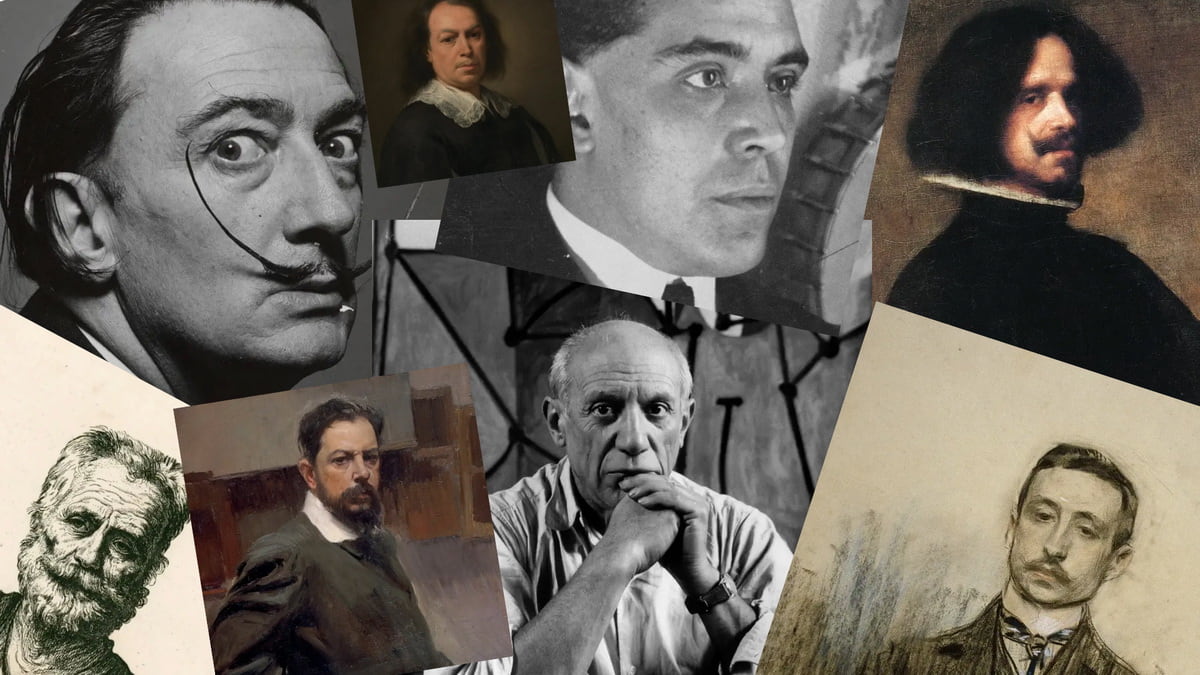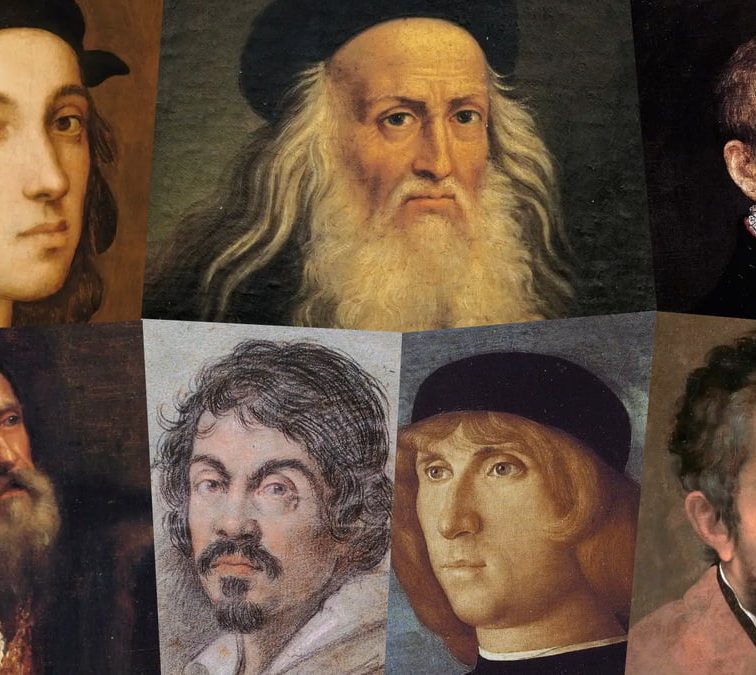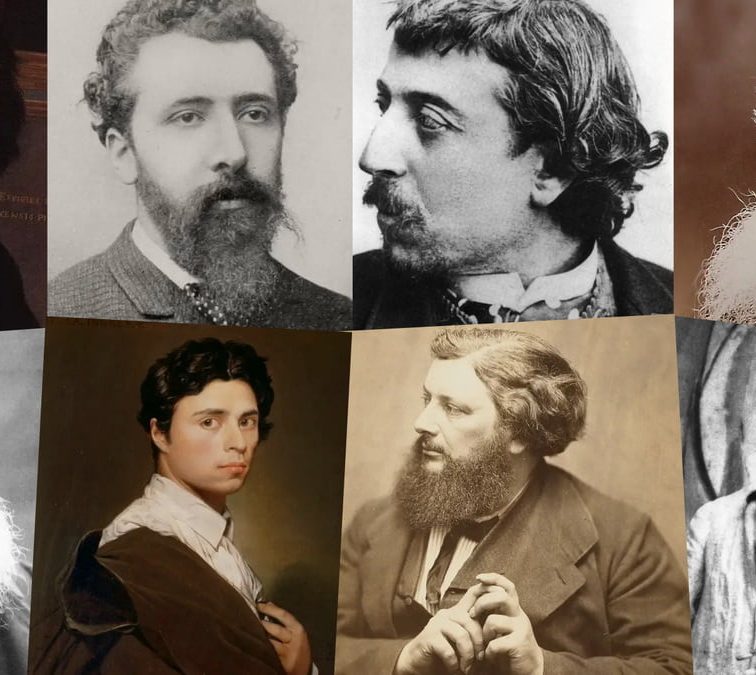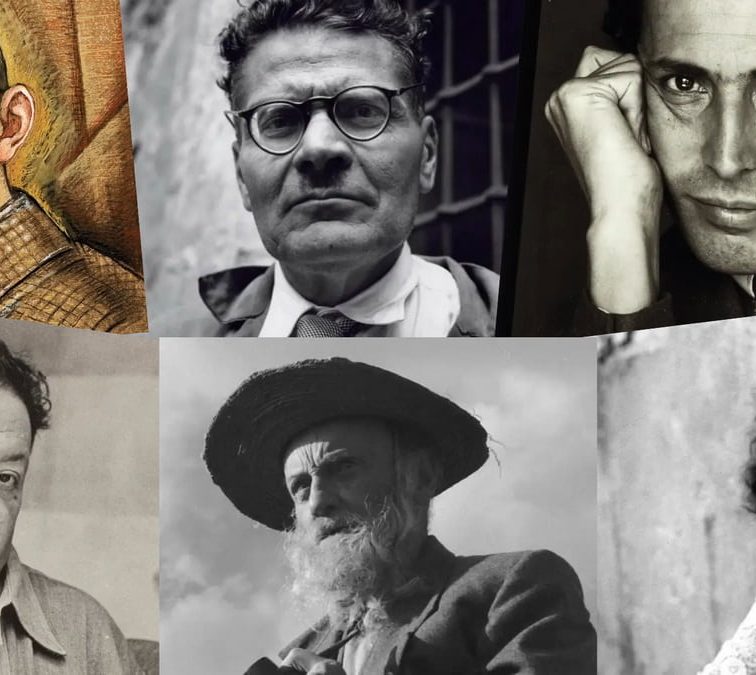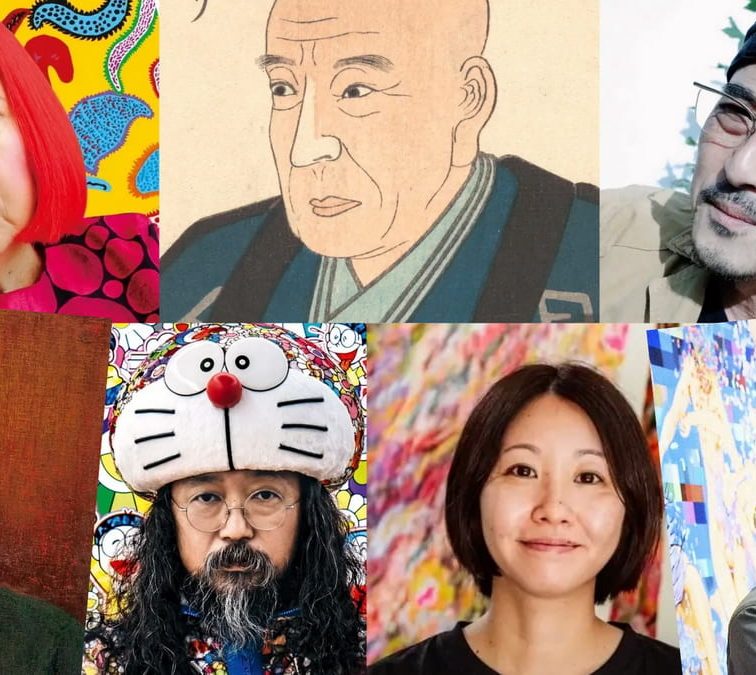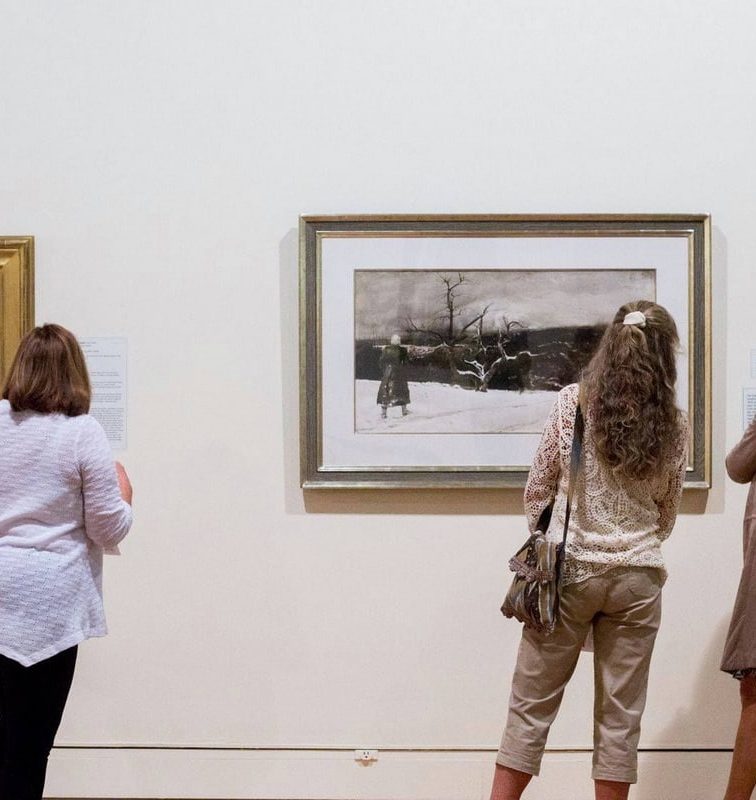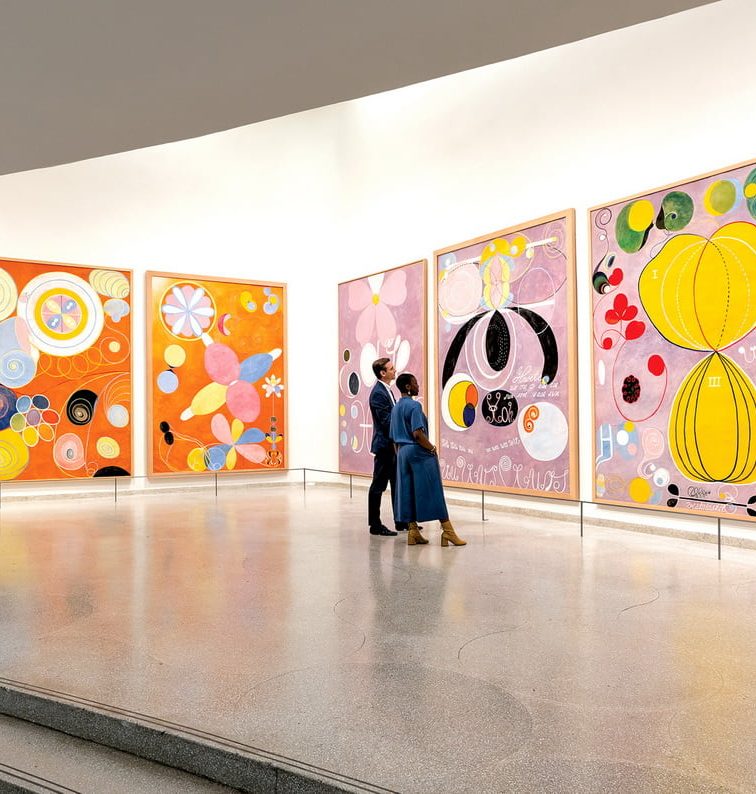Dive into the vibrant world of Spanish art, where each brushstroke tells a story and every canvas echoes history. Imagine Picasso, redefining the boundaries of modern art with his radical ideas. Picture Dalí’s dreamscapes, bending reality with surreal genius. Visualize Goya, capturing the tumult of his times with unflinching honesty. These are but glimpses into the legacies of Spain’s artistic masters.
From the profound depths of El Greco’s spiritual expressions to Gaudí’s whimsical architectural wonders, Spain has been a cradle of artistic innovation and brilliance. Get ready to explore the lives, works, and enduring impact of the most famous Spanish artists.
1. Pablo Picasso: Revolutionizing Modern Art
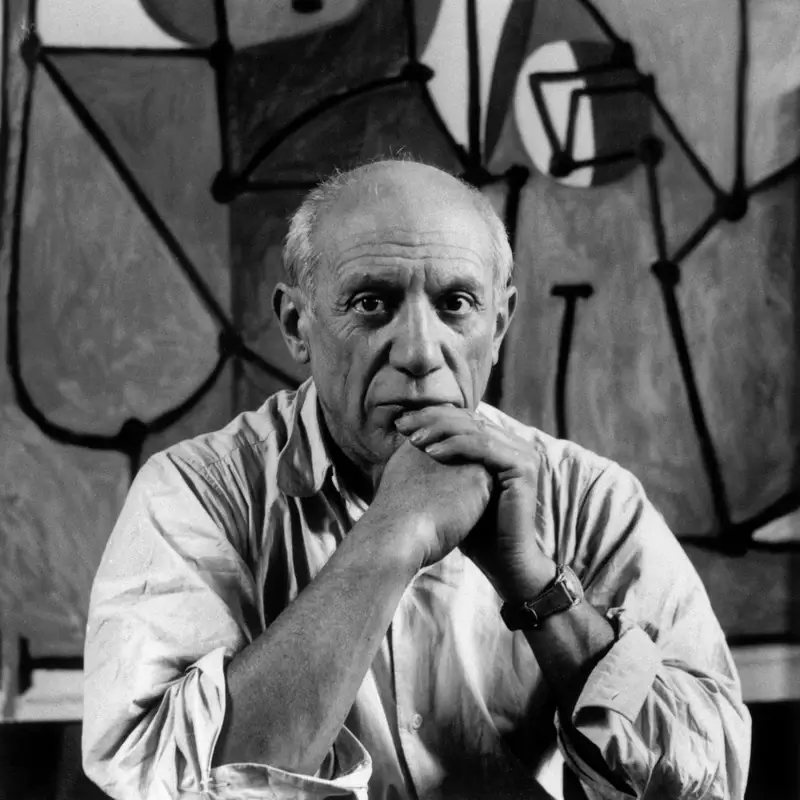
Pablo Picasso, a name synonymous with modern art, reshaped the artistic landscape of the 20th century. Born on October 25, 1881, in Málaga, Spain, Picasso’s journey into the art world was both profound and revolutionary.
Cubism: A New Perspective
Picasso, alongside Georges Braque, pioneered Cubism, a radical approach that fragmented the conventional perspective. Breaking away from the Renaissance tradition of illusionistic art, Cubism presented multiple views on a single canvas, offering a more comprehensive representation of objects. This revolutionary style went beyond mere geometry; it was an attempt to depict a new kind of reality.
Synthetic Cubism and Collage
Picasso’s foray into Synthetic Cubism marked a significant shift. Characterized by the synthesis of different elements, this phase saw the use of collage techniques, incorporating materials like newspaper clippings and sheet music directly onto the canvas. This innovation blurred the lines between painting and mixed media, influencing not only Cubism but also other movements like Surrealism.
Emotion and Personal Experiences
Picasso’s art was deeply personal, acting as a visual diary of his life. His Blue Period, marked by somber, monochromatic works, was a response to his friend Carles Casagemas’ suicide. Similarly, “Guernica,” arguably his most famous painting, was a powerful anti-war statement reacting to the bombing of the Basque town during the Spanish Civil War.
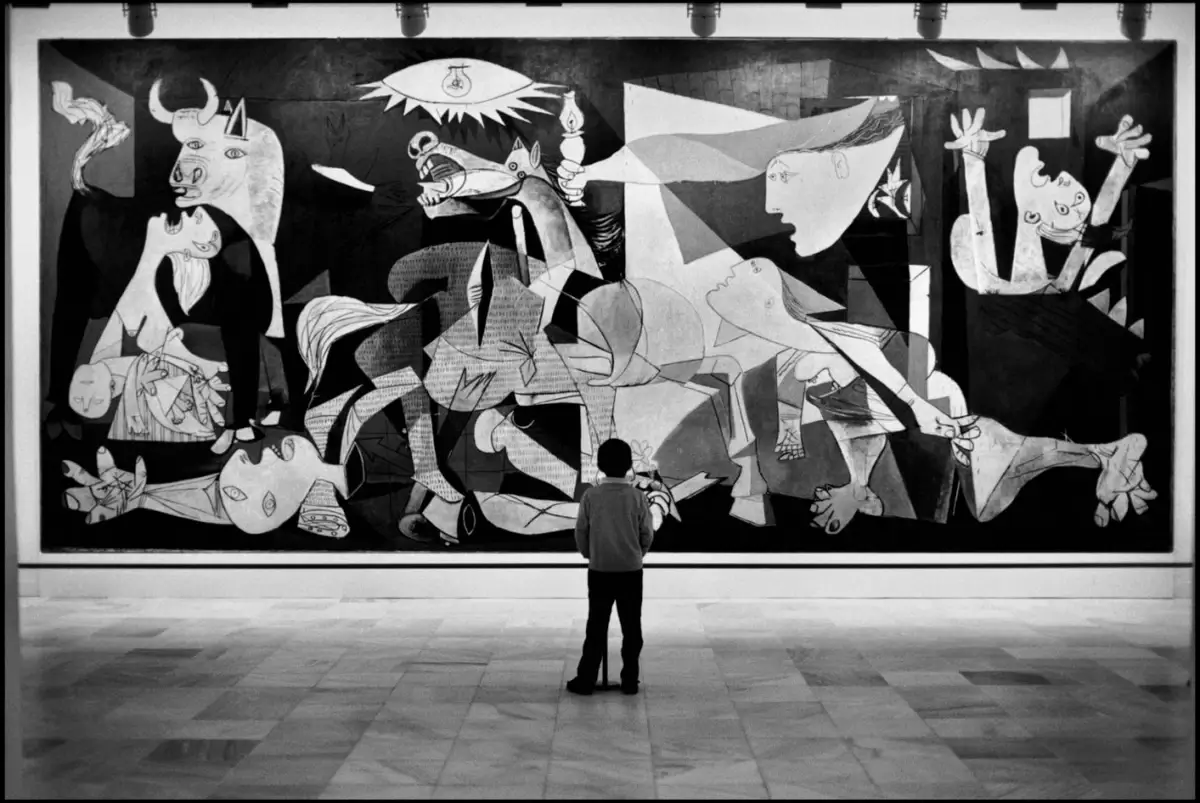
Pablo Picasso, “Guernica”, 1937. Image: cameralabs.org
Sculptural Innovations
Picasso was also a groundbreaking sculptor. He pioneered constructed sculpture, using materials like metal, wire, and cardboard to create abstract forms. His sculptures like “Guitar” and “Bull’s Head” challenged traditional notions of sculpture and are celebrated for their innovation.
Influence and Legacy
The impact of Picasso’s work is immeasurable. He inspired generations of artists with his willingness to experiment and break with tradition. His influence can be seen in subsequent art movements like Surrealism, Abstract Expressionism, and even Pop Art. Beyond his artistic achievements, Picasso’s personal life, style, and narratives have become subjects of cultural explorations.
Picasso’s legacy is a testament to his enduring impact on the global art scene, a legacy that continues to inspire and challenge artists and art enthusiasts around the world.
2. Salvador Dalí: The Surrealist Icon
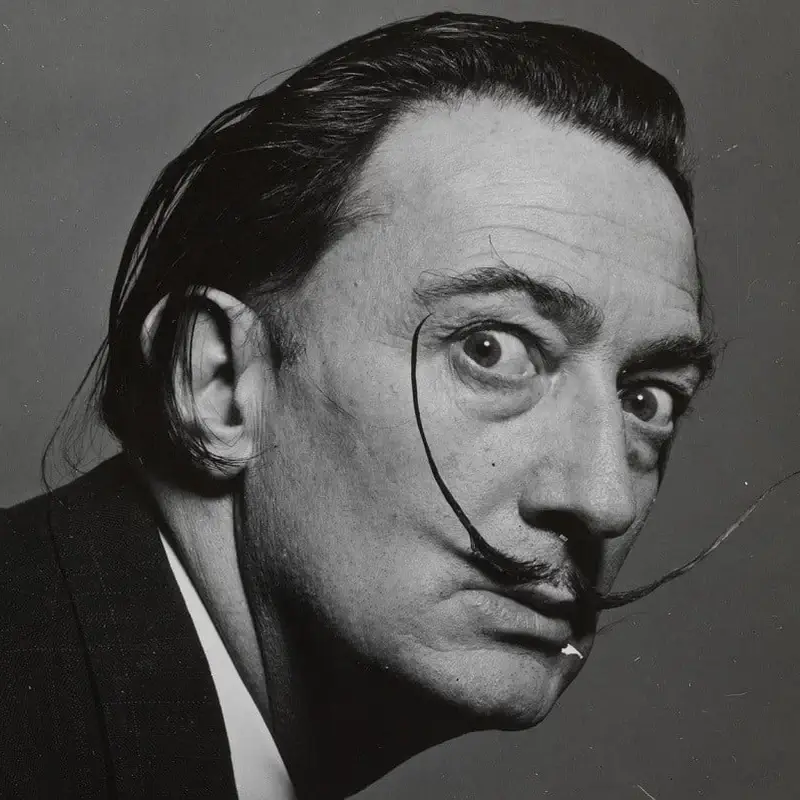
Salvador Dalí, born on May 11, 1904, in Figueras, Spain, is celebrated as a master of Surrealism, an artistic and literary movement that emerged in the 20th century. His work is renowned for its vivid and bizarre imagery, often drawing from dreamscapes and subconscious realms.
Surrealism and the Subconscious
Dalí’s most iconic work, “The Persistence of Memory” (1931), showcases melting clocks against a desolate landscape, symbolizing the fluidity of time. This masterpiece, along with others, illustrates Dalí’s fascination with the subconscious and dream interpretation, themes central to Surrealism. His unique approach involved creating a “paranoiac-critical method,” a technique that allowed him to access and visually represent the irrational knowledge and delirium of the subconscious mind.
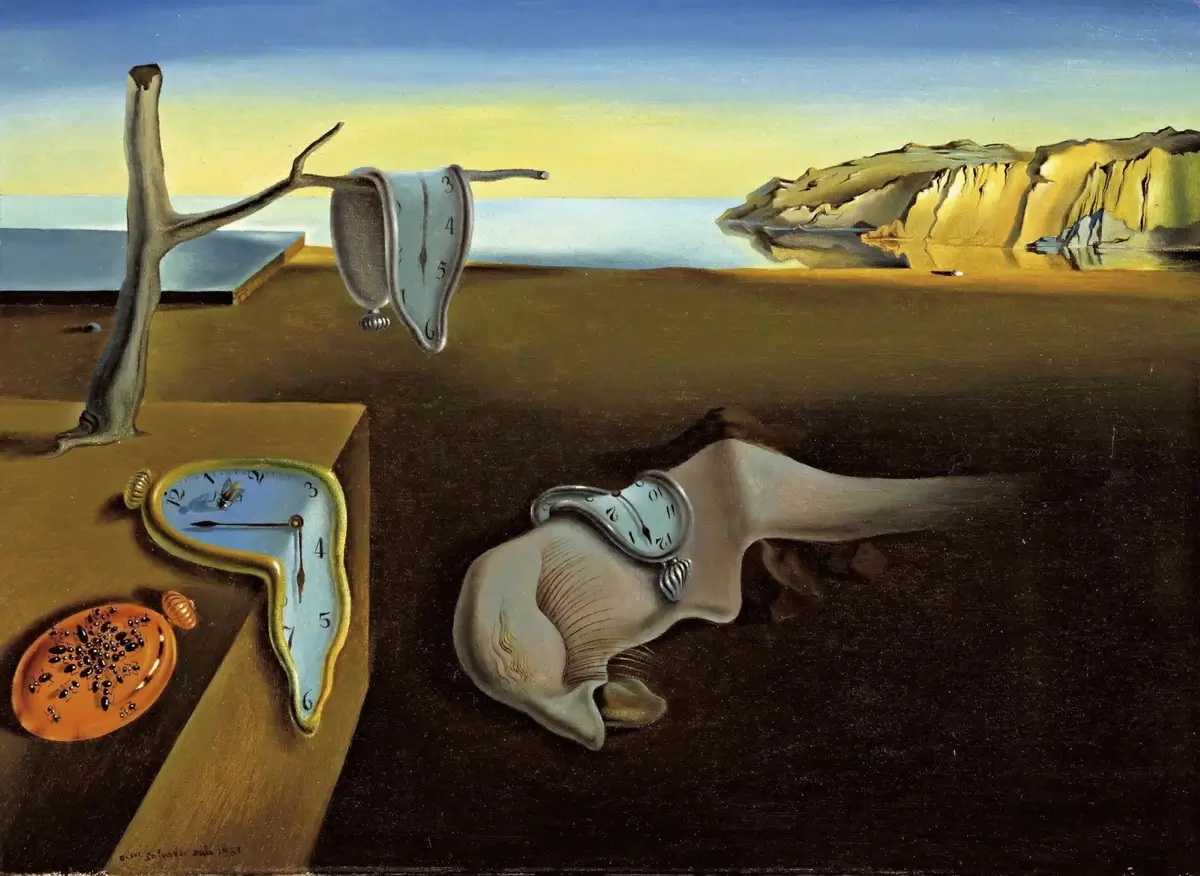
Salvador Dalí, “The Persistence of Memory”, 1931. Image: arthive.com
Artistic Evolution and Influence
Dalí’s artistic journey was marked by various phases, each reflecting his deep engagement with different themes and styles. His works often combined bizarre dreamlike images with excellent draftsmanship and vibrant colors, contributing to his status as a Surrealist icon. He not only influenced the art world but also left his mark on film, sculpture, and photography.
Controversial and Captivating
Dalí was as much known for his flamboyant personality and distinctive mustache as he was for his art. His eccentric behavior and public appearances contributed to his fame and infamy alike. Despite controversies, including his political views and actions, Dalí’s contribution to Surrealism and the broader art world remains indisputable.
Salvador Dalí remains a towering figure in the world of Surrealism, his works a testament to the boundless realms of imagination and the deep recesses of the human mind.
3. Francisco Goya: Chronicler of Turbulence
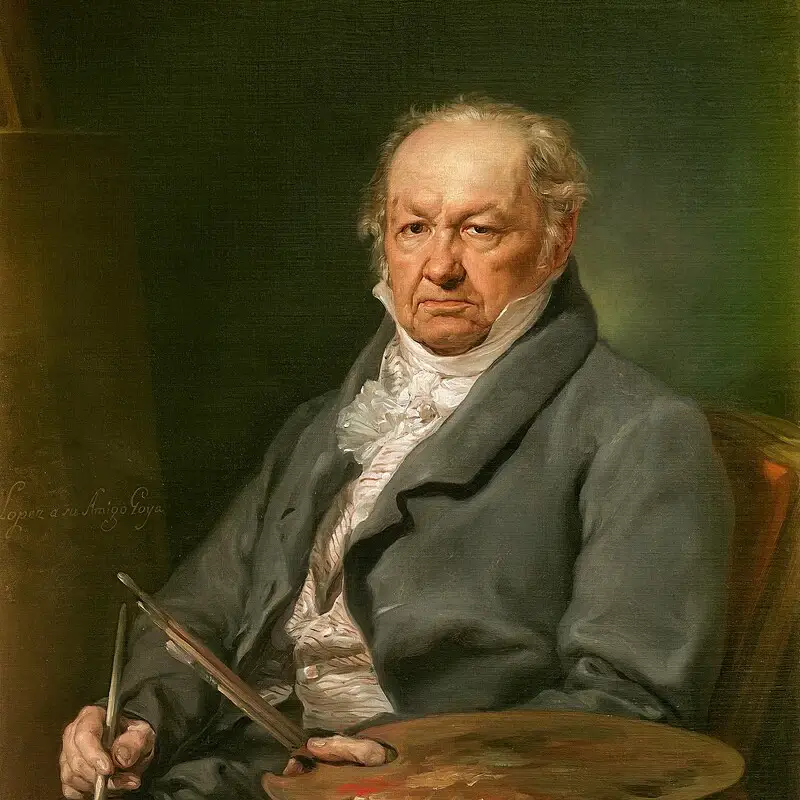
Francisco José de Goya y Lucientes, born on March 30, 1746, in Fuendetodos, Spain, is recognized as a pivotal figure in the transition from the Old Masters to modern art. His work is a profound reflection of the turbulent times he lived through, particularly the Peninsular War.
From Court Painter to War Witness
Initially, Goya’s career was marked by his role as a court painter to Spanish royalty, where he created elegant portraits that echoed the Rococo style. However, a severe illness in 1793 left him deaf, significantly impacting his artistic direction. His work turned progressively darker, embodying a more pessimistic view of society.
The Horrors of War
The Peninsular War (1808-1814), a result of Napoleon’s invasion of Spain, profoundly affected Goya. He captured the brutality and horrors of war in his paintings “The Second of May 1808” and “The Third of May 1808”, as well as in his etching series “The Disasters of War.” These works, filled with raw emotion and stark realism, are considered a “prodigious flowering of rage”, displaying a deep criticism of the violence and the societal collapse of his era.
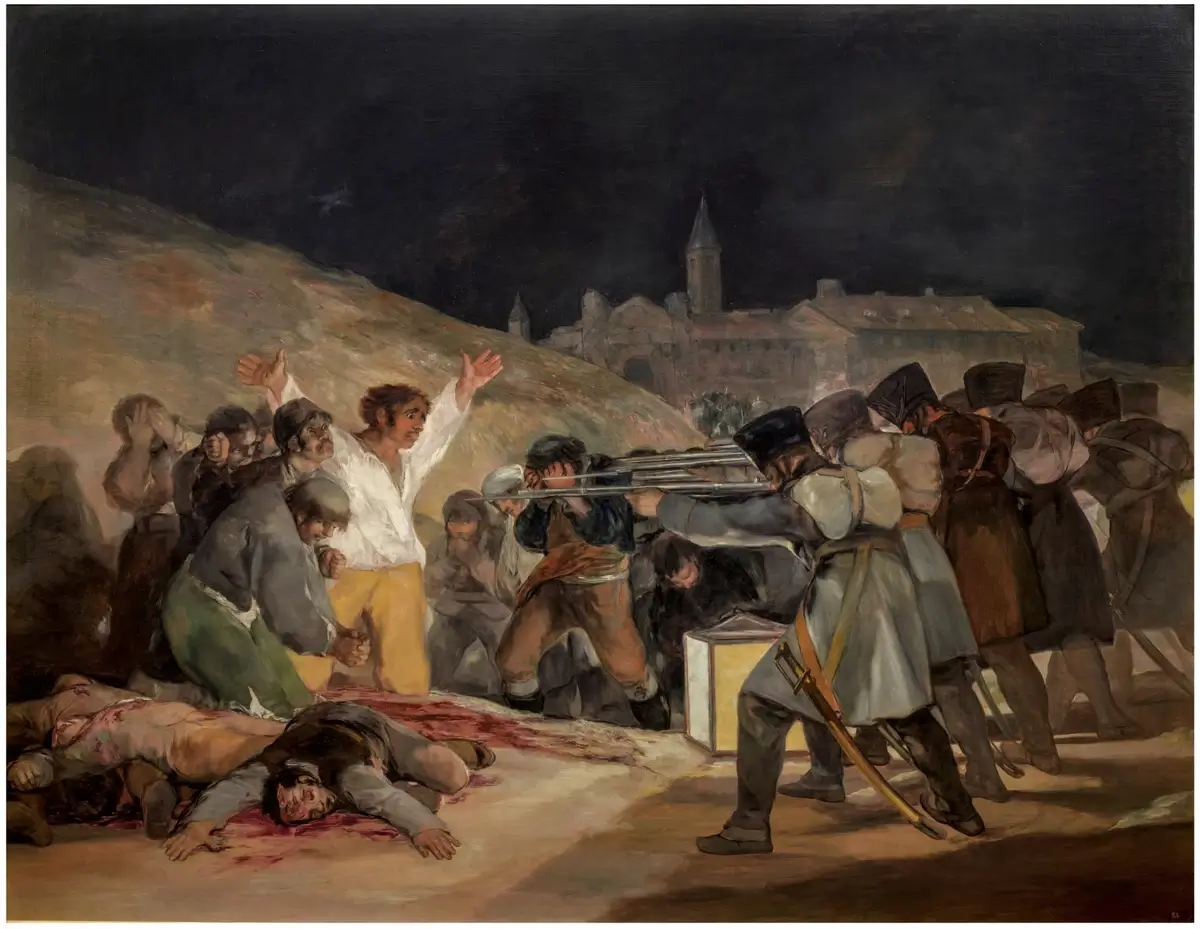
Francisco Goya, “The Third of May 1808”, 1814. Image: museodelprado.es
Later Years and Exile
In his later years, especially after the restoration of the Bourbon monarchy in 1814, Goya became increasingly disillusioned and isolated. He retreated to his farmhouse, La Quinta del Sordo, where he created the haunting “Black Paintings”, a series of dark and enigmatic murals. In 1824, Goya went into self-imposed exile in Bordeaux, France, to escape the oppressive regime of Ferdinand VII, where he remained until his death in 1828.
A Lasting Legacy
Goya’s legacy as an artist lies in his ability to blend traditional techniques with modern themes. He was a forerunner in using art to comment on social and political issues, which later influenced many artists, including Édouard Manet and Pablo Picasso. His unflinching portrayal of the human condition, especially in the face of war and corruption, remains relevant and continues to resonate with contemporary audiences.
4. Joan Miró: The Abstract Visionary
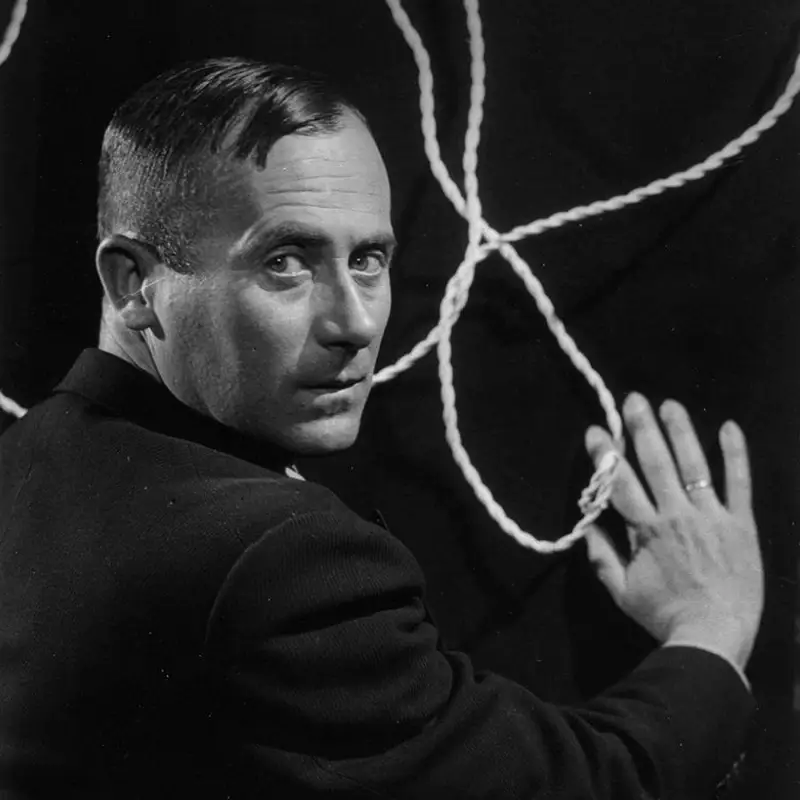
Joan Miró, born on April 20, 1893, in Barcelona, Spain, was a profound catalyst in the art world, known for merging abstract art with Surrealist fantasy. His work stands out for its vibrant colors, imaginative shapes, and the expression of a deep, internal world.
A Journey from Realism to Surrealism
Miró’s journey into the art world was marked by his early inclination towards Fauvism and Expressionism, drawing inspiration from Vincent van Gogh and Paul Cézanne. His style evolved significantly over his career, incorporating elements of Surrealism while maintaining a distinct, personal touch. This blend of styles is particularly evident in works like “Dog Barking at the Moon” and “The Farm”, the latter of which was acclaimed by Ernest Hemingway for capturing the essence of Spain.
Challenging Artistic Conventions
Miró’s work was often a rebellion against conventional painting methods, a stance that resonated with his personal views on society. He sought to disrupt the visual norms of established painting, diving into a world of subconscious creation that was both whimsical and profound. His pieces often included biomorphic forms and a whimsical yet mysterious playfulness, as seen in “Dutch Interior (I)”.
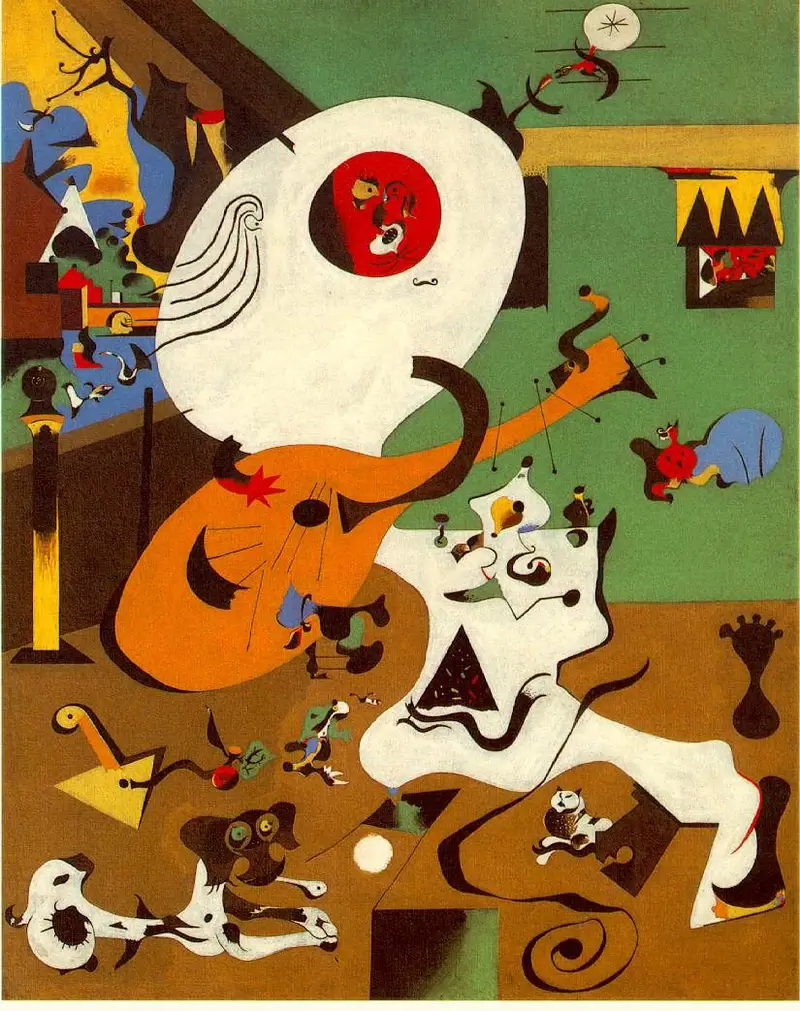
Joan Miró, “Dutch Interior (I)”, 1928. Image: artchive.com
A Lasting Legacy
Miró’s legacy is not just in his unique style but also in his influence on the art world. His work paved the way for movements such as Surrealism and modern abstract art, inspiring future generations of artists with his imaginative creations and unconventional approach.
Miró’s art continues to captivate audiences with its vivid imagery and the artist’s ability to delve into the deeper recesses of the subconscious mind, making him a true visionary of the 20th century.
5. Diego Velázquez: The Master of Spanish Baroque
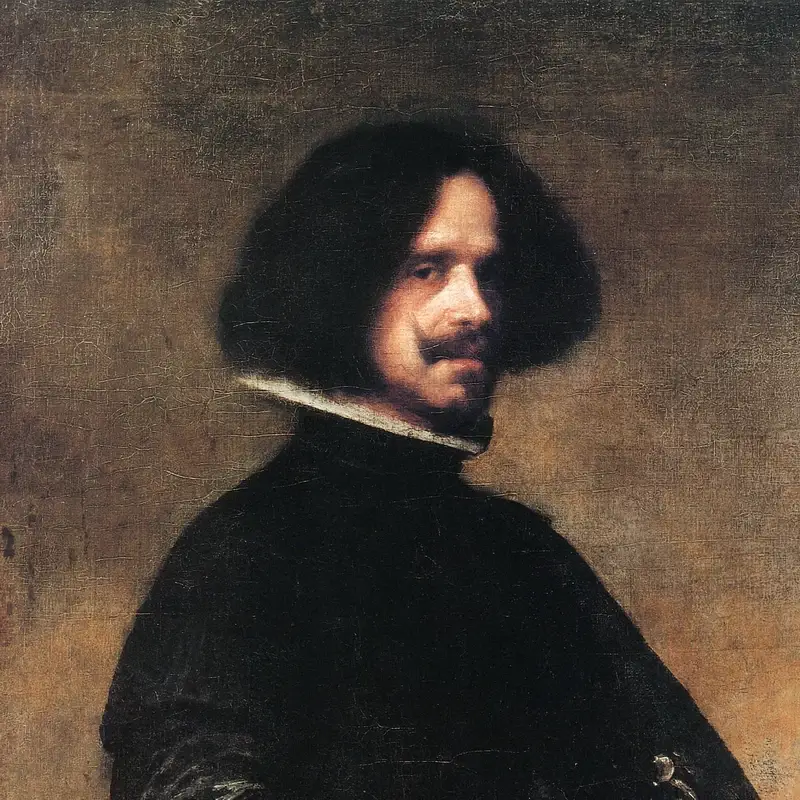
Diego Velázquez, baptized on June 6, 1599, in Sevilla, Spain, is hailed as one of the most significant painters of the Spanish Baroque period. His masterful use of tenebrism—a dramatic contrast of light and dark—defined his unique style, which blended the Baroque movement’s passion with his individualistic approach.
Royal Patronage and Artistic Evolution
Velázquez’s journey as an artist was notably intertwined with his role as a court painter to King Philip IV. His portraits of the king and royal family are celebrated for their realistic depiction and keen attention to detail. These works, like “Philip IV in Brown and Silver,” displayed the subject’s affluence and stately demeanor, while pieces like “Portrait of Juan de Pareja” showcased his ability to capture the humanity of his subjects with profound realism.
Notable Works and Technique
Among his famous works, “The Surrender of Breda” stands out for its depiction of a historical event with a unique mix of dignity and realism. Velázquez’s skill in portraying the ceremonial handing over of the keys to the fortress of Breda is a testament to his ability to weave narrative and emotion into his paintings. Another notable work, “The Triumph of Bacchus,” exhibits his proficiency in depicting mythological subjects with a touch of naturalism. His later masterpiece, “Las Meninas,” is renowned for its complex composition and the innovative way Velázquez included himself in the scene.
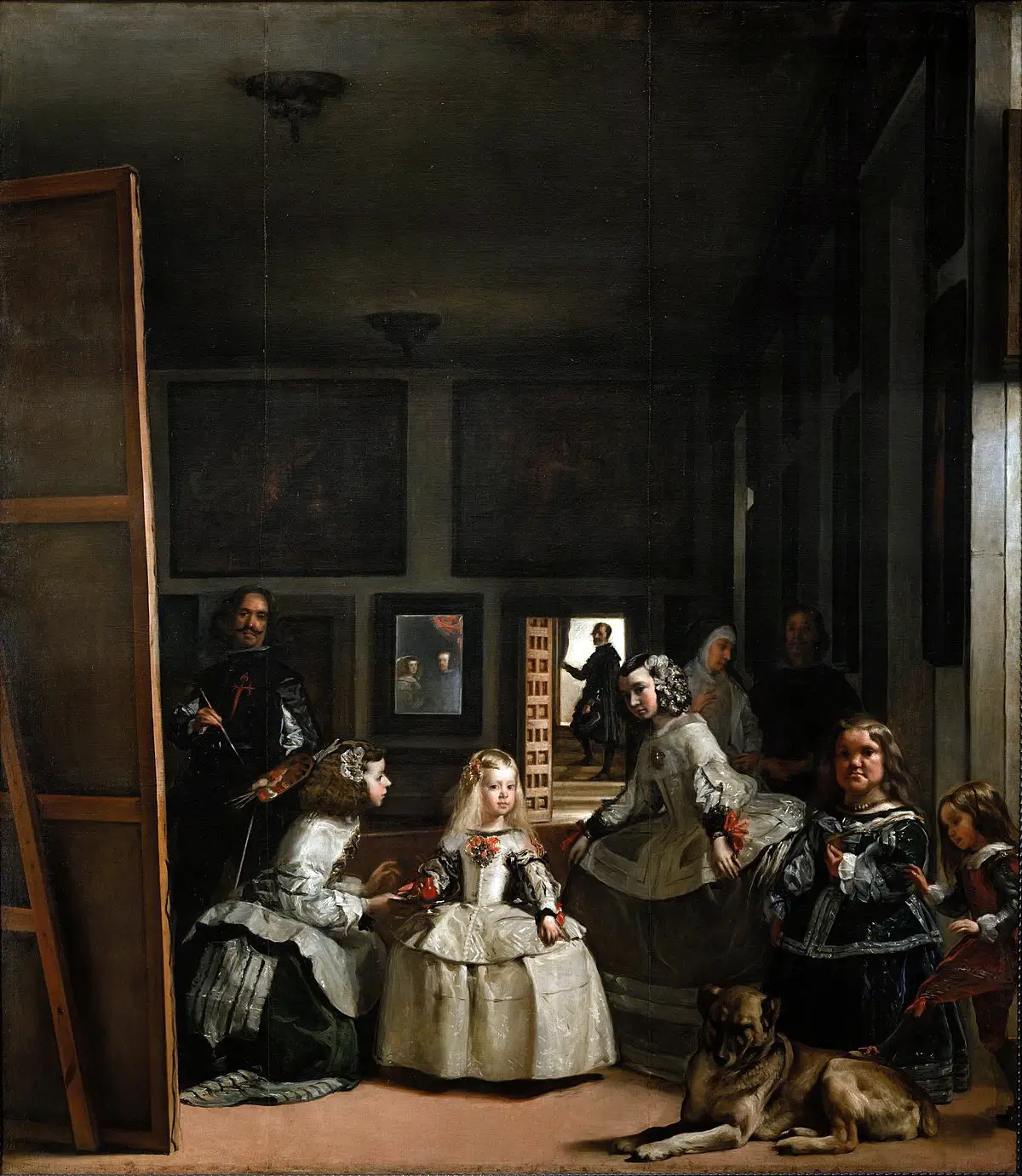
Diego Velázquez, “Las Meninas”, 1656. Image: Wikimedia Commons
Legacy and Influence
Velázquez’s influence extended beyond the Baroque era, impacting the work of various artists across centuries. His expressive brushstrokes and limited color palette were precursors to Impressionism, while his deep understanding of light and character laid the foundation for Realism. Renowned artists like Édouard Manet, Pablo Picasso, and Salvador Dalí drew inspiration from Velázquez’s work, particularly admiring his ability to capture the essence of his subjects and the subtleties of human expression.
Diego Velázquez remains a towering figure in the world of art, celebrated for his extraordinary ability to bring to life both the grandeur of the Spanish court and the depth of individual characters.
6. El Greco: The Greek in Spain
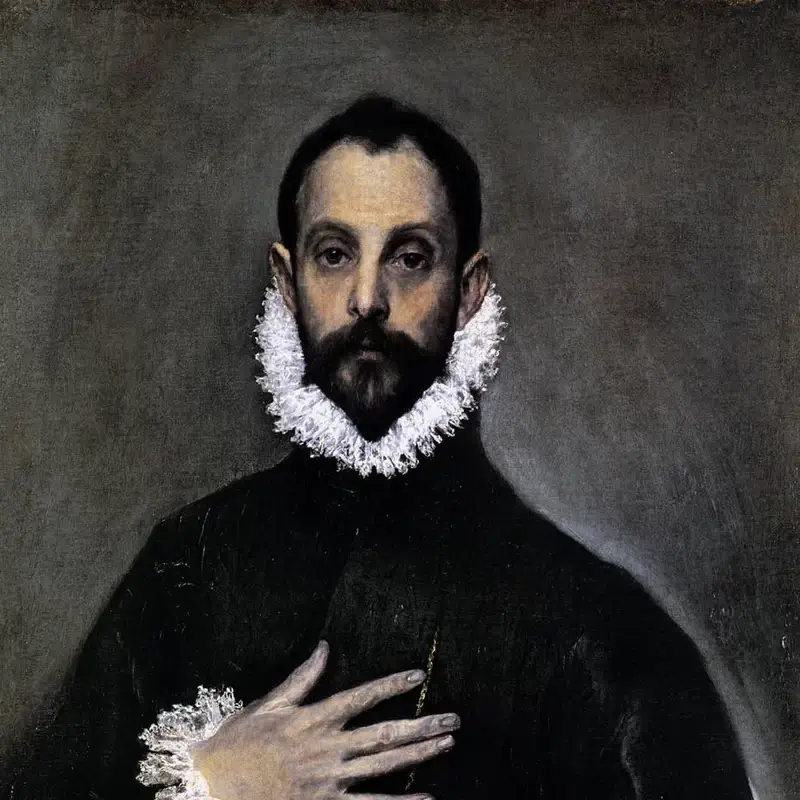
Doménikos Theotokópoulos, better known as El Greco (“The Greek”), was born in 1541 on the Greek island of Crete, then a Venetian territory. His journey in art began in the Byzantine tradition before moving to Venice and eventually settling in Toledo, Spain. This geographic and cultural journey deeply influenced his artistic style.
A Blend of Cultures in Art
In Venice, El Greco was exposed to the Venetian Renaissance style, working under the influence of masters like Titian. This period marked a significant shift from his Byzantine roots to a more Western approach in painting. His style further evolved in Toledo, where he produced his most acclaimed works, blending Byzantine elements with Western Renaissance techniques.
Masterpieces and Style
El Greco’s art is known for its dramatic and expressionistic style, characterized by elongated figures and often fantastical pigmentation. His works, such as “The Burial of the Count of Orgaz,” showcase his unique approach to religious themes, merging the physical and spiritual realms with a deep emotional intensity. This painting, commissioned in 1586, is celebrated for its depiction of a local legend and is considered a prime example of Mannerism.
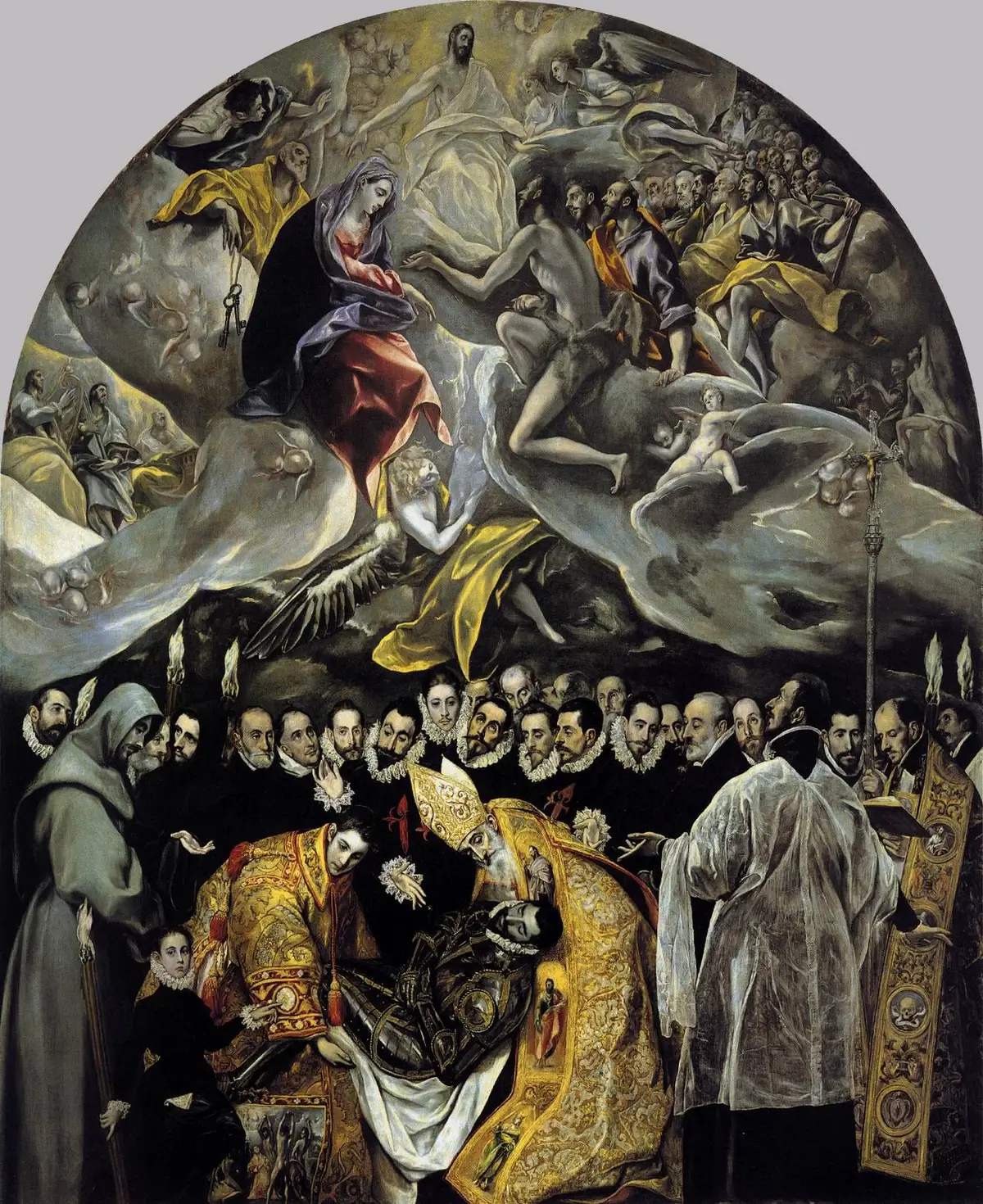
El Greco, “The Burial of the Count of Orgaz”, 1586. Image: Wikimedia Commons
Legacy and Influence
El Greco’s influence extended beyond his lifetime, with his works gaining appreciation in the 20th century. He is regarded as a precursor of both Expressionism and Cubism, admired for his rejection of naturalism in favor of a more conceptual art form. His ability to encapsulate visionary experiences set him apart as an artist of deep intellect and spirit, bridging Byzantine traditions with the Western painting world.
El Greco’s journey from a Byzantine icon painter to a master of the Spanish Renaissance epitomizes a unique fusion of cultures and styles, leaving a lasting impact on the art world.
7. Eduardo Chicharro: Modernism’s Symbolic Voice

Eduardo Chicharro y Agüera, born on June 18, 1873, in Madrid, was a Spanish painter known for his contribution to various genres, particularly noted for his female portraits. His journey into the art world was deeply influenced by his father, a craftsman and glazier, and supported by his mother after his father’s early death.
Early Inspirations and Artistic Development
Chicharro’s artistic path began at the School of Arts and Crafts in Madrid, followed by his studies at the Real Academia de Bellas Artes de San Fernando at the age of fifteen. His style was significantly shaped by the teachings of influential artists like Joaquín Sorolla and Carlos de Haes, the latter having a profound impact on his artistic direction.
National and International Recognition
Chicharro’s talent was recognized early in his career, receiving accolades such as an honorable mention at the National Exhibition of Fine Arts in 1896. His artistry continued to gain recognition with awards and scholarships, allowing him to study at the prestigious Spanish Academy in Rome. His work “The Poem of Arminda and Rinaldo” won a First Class prize at the National Exhibition in 1904, showcasing his mastery in blending classical themes with a modernist approach.
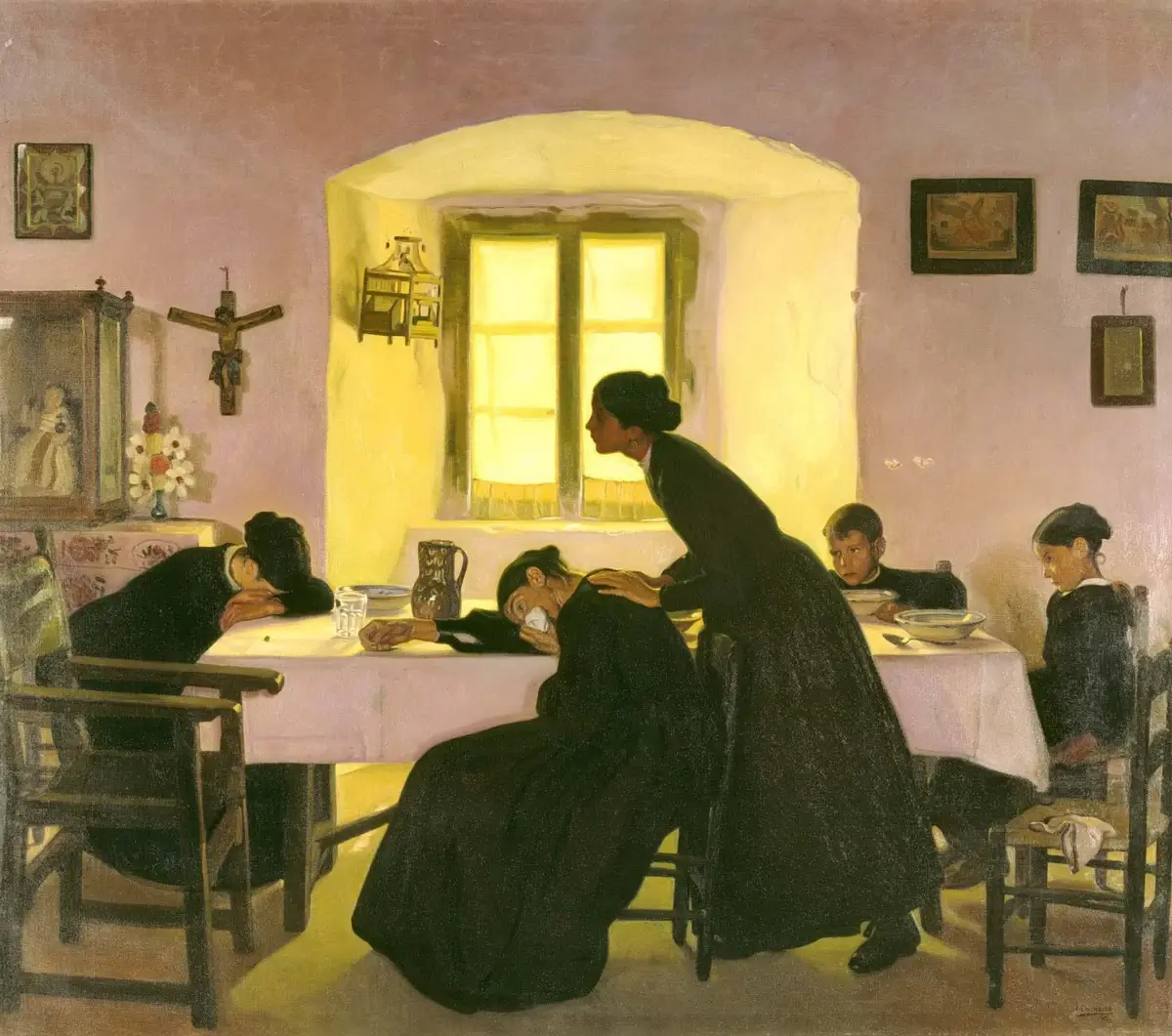
Eduardo Chicharro, Dolor (Pain), 1912. Image: museoreinasofia.es
Cultural Contributions and Later Years
Beyond his artistic endeavors, Chicharro was instrumental in founding the Asociación de Pintores y Escultores in 1910, furthering the development of modern art in Spain. His time as Director of the Spanish Academy in Rome from 1912 to 1925 broadened his artistic perspective, especially his interest in Indian culture and the works of Rabindranath Tagore.
Chicharro’s legacy in the art world is marked by his diverse range of works and contributions to the cultural and artistic landscape of Spain. His unique style and influence in the modernist movement remain celebrated in Spanish art history.
8. Sorolla: Master of Light and Shade
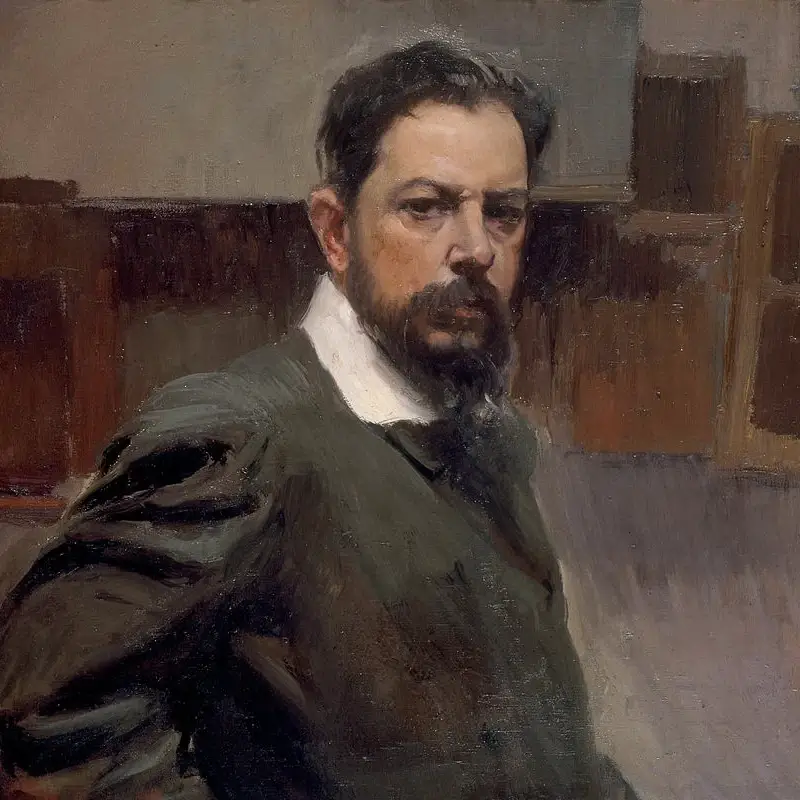
Joaquín Sorolla y Bastida, born in Valencia, Spain, on February 27, 1863, stands out as a prominent figure in the art world, renowned for his distinctive variant of Impressionism. His paintings, often executed in the open air, vividly capture the sun-drenched seacoast of Valencia, showcasing his unique ability to manipulate light and shade.
Artistic Journey and Style
Sorolla demonstrated a remarkable aptitude for art from a young age. Orphaned at two, his artistic talent was fostered by his aunt and uncle, who enrolled him in art school at the age of nine. His early career saw him traveling to Rome and Paris, where he was exposed to modern art and honed his skills. Despite the influence of modernism, Sorolla maintained a commitment to depicting nature truthfully, a philosophy that would come to define his style.
International Recognition
Sorolla’s reputation burgeoned through his participation in exhibitions across Europe and the Americas, where he consistently won awards and acclaim. His international success was solidified with an exhibition in New York, where he was also commissioned to paint President Taft. This period marked him as one of the most renowned Spanish artists globally.
Mastery of Light
Sorolla’s Impressionist style is particularly noted for its brilliant treatment of light. His beach scenes, painted in the 1890s, are characterized by their vibrant colors and luminous quality, drawing comparisons with contemporaries like Claude Monet and John Singer Sargent. His painting “Sad Inheritance” (1899) is a poignant example, displaying his skill in rendering luminous hues and capturing atmospheric effects with loose brushstrokes.
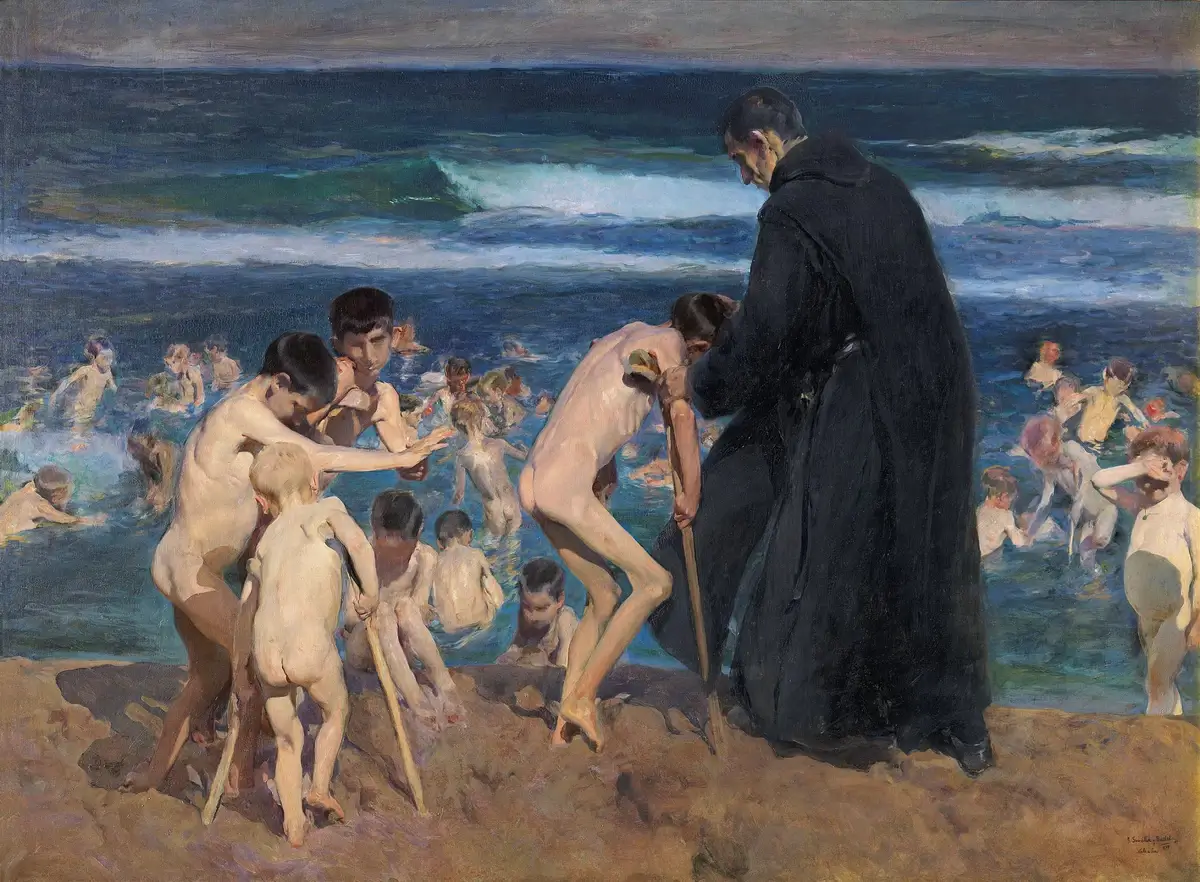
Joaquín Sorolla, “Sad Inheritance”, 1899. Image: Wikimedia Commons
Legacy
Sorolla’s enduring legacy lies in his masterful manipulation of light, which earned him the title “Master of Light.” His work continues to be celebrated for its dynamic, expressive use of color and light, capturing the essence of Spanish life and landscapes.
Sorolla’s art, which encompasses a range of subjects including beach scenes, portraits, and societal commentaries, remains a testament to his unique vision and artistic prowess, making him an iconic figure in the realm of Spanish Impressionism.
9. Juan Gris: Cubism’s Other Pioneer
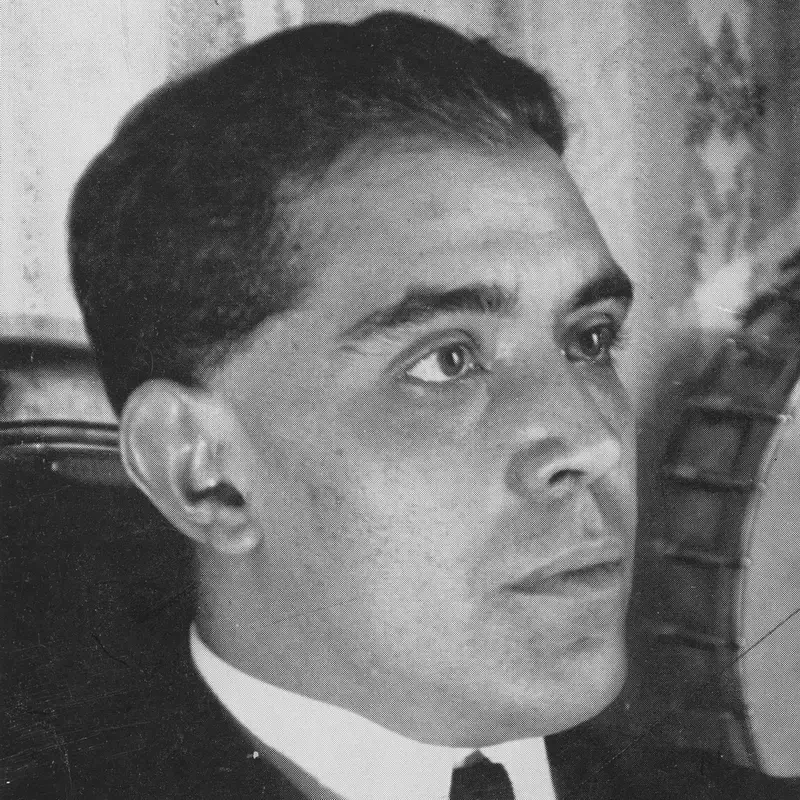
Juan Gris, born José Victoriano González-Pérez in 1887 in Madrid, began his artistic career as an illustrator, a path that led him to Paris in 1906. There, he became immersed in the burgeoning Cubist movement, drawing inspiration from the likes of Pablo Picasso and Georges Braque. Gris’ unique approach to Cubism combined his precise drawing skills with a more systematic and structured interpretation of the Cubist vision.
Innovations in Cubism
What set Gris apart was his focus on the clarity of geometric forms and the harmonious use of color, distinguishing him from the more monochromatic palettes of his Cubist contemporaries. His works, such as “Still Life with Checked Tablecloth” (1915), showcase his mastery in creating complex compositions that are both balanced and dynamic.
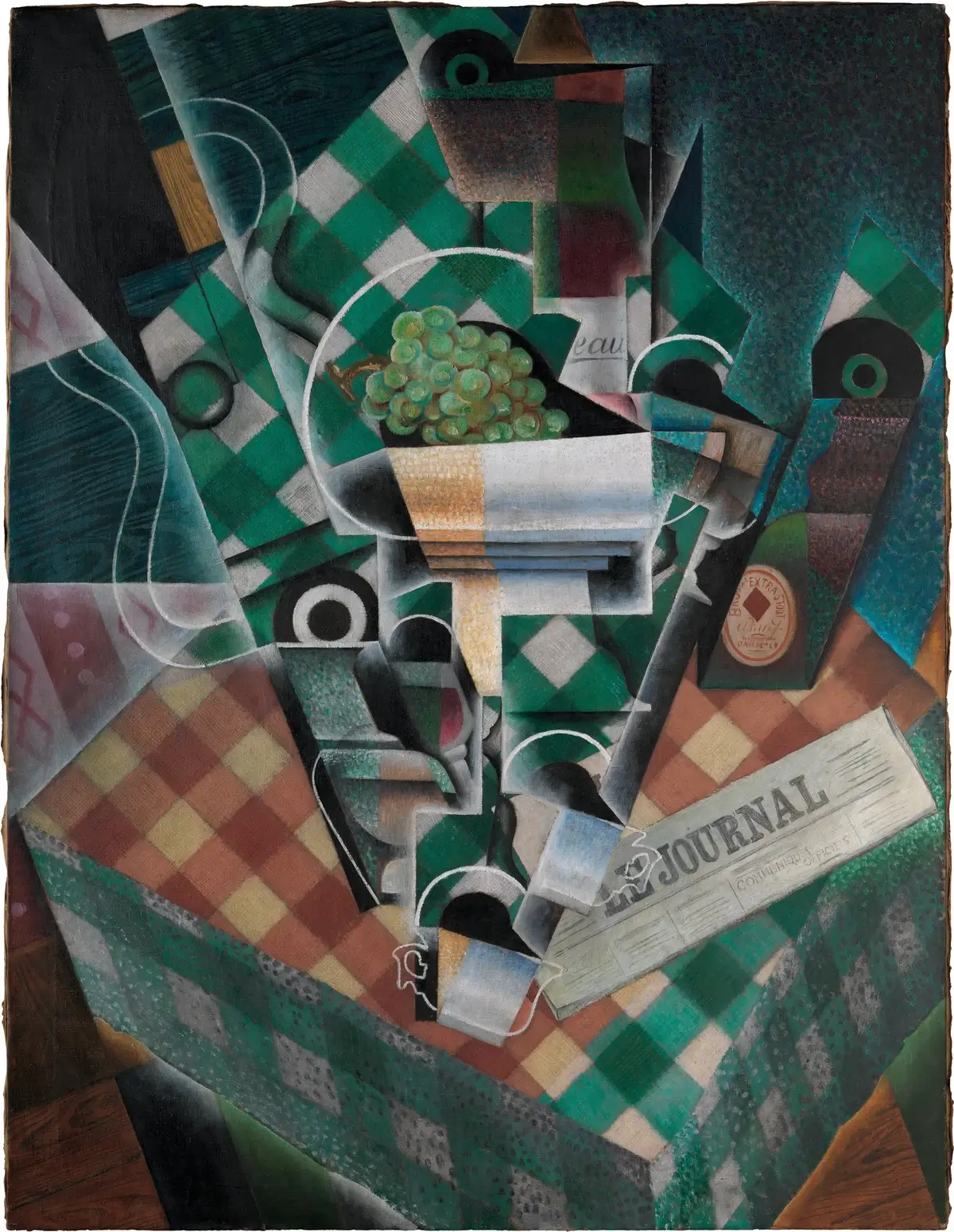
Juan Gris, “Still Life with Checked Tablecloth”, 1915. Image: Wikimedia Commons
Influence and Legacy
Despite his premature death at the age of 40 in 1927, Juan Gris left a lasting impact on the world of art. His methodical and thoughtful approach to Cubism contributed significantly to the movement, influencing future artists and styles. Gris’ work remains a testament to the diversity and depth of the Cubist movement, highlighting its possibilities beyond its founding fathers.
Juan Gris’ legacy in Cubism is not just in the stylistic evolution he brought to the movement, but also in the way he bridged the gap between early Cubism and its more evolved, synthetic phase. His work remains a crucial part of the narrative of modern art history.
10. José Gutiérrez Solana: The Dark Realist
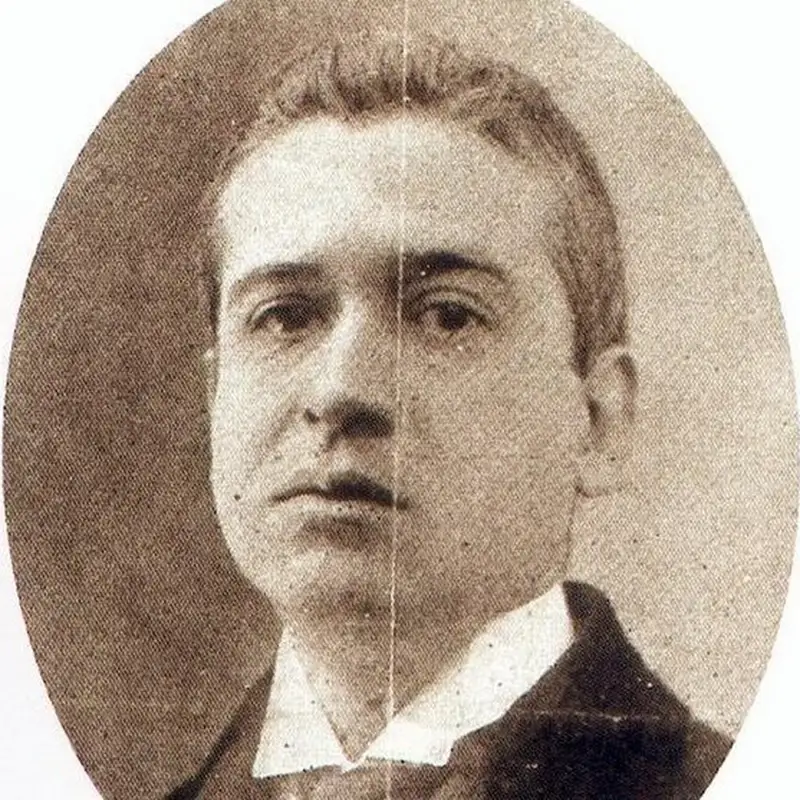
José Gutiérrez Solana, born in 1886 in Madrid, Spain, is renowned for his expressionist style deeply influenced by the works of El Greco, Goya’s Black Paintings, and Eugenio Lucas Velázquez. His early artistic education was shaped under the guidance of his uncle, José Díez Palma, and later at the Escuela de Bellas Artes de San Fernando.
Exploration of Spain’s Underbelly
Solana’s artistic exploration took him across Spain, from Santander to Madrid and regions like La Mancha, Aragón, and Andalucía. He was particularly inspired by the vibrant, yet often grim aspects of Spanish life. His frequent visits to carnivals, cemeteries, hospitals, and bordellos contributed to the unique character of his works. Solana’s paintings often reflect a fascination with the darker and more somber aspects of society.
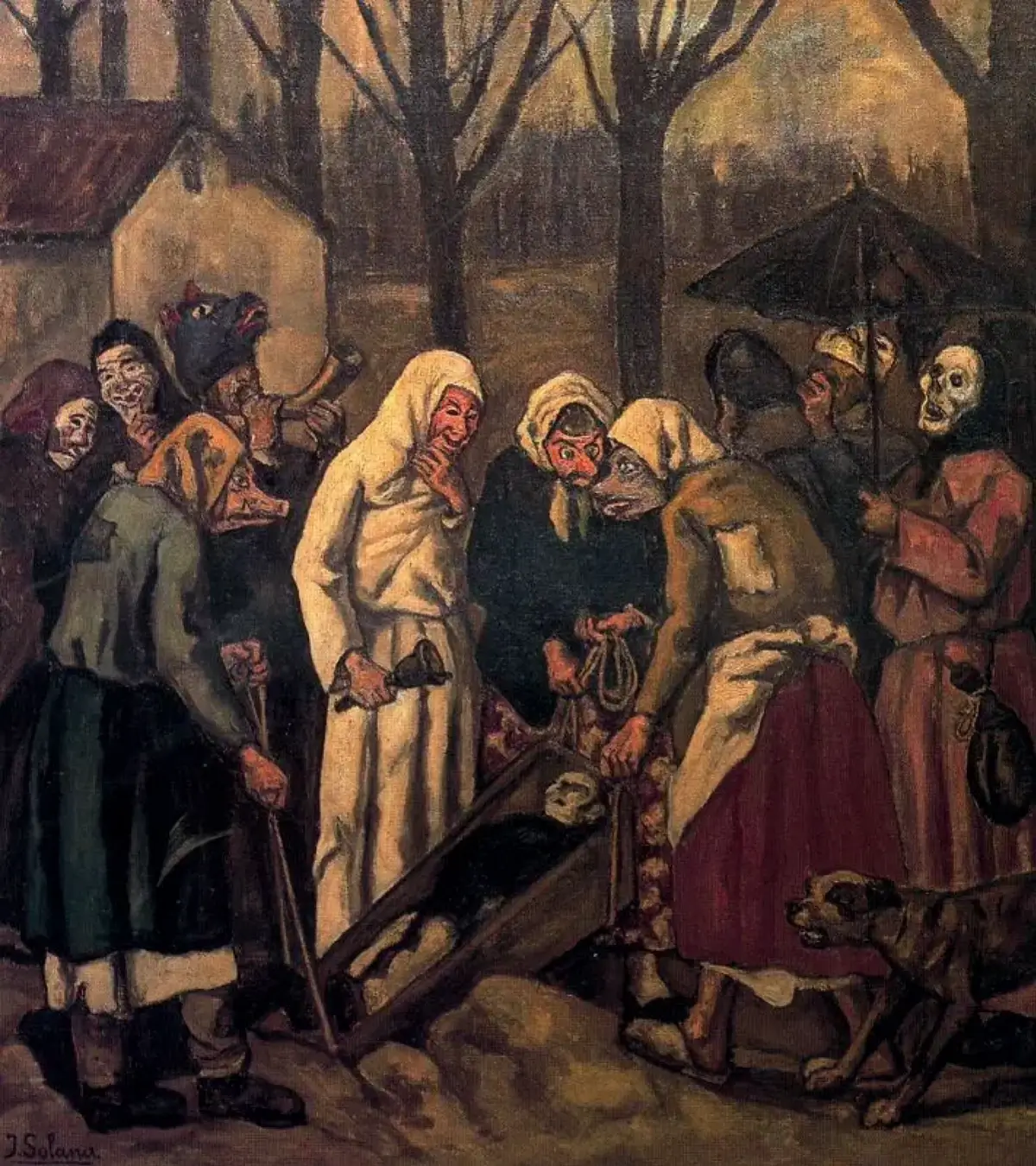
José Gutiérrez Solana, “The Burial of the Sardine”, 1943. Image: arthive.com
Artistic Recognition and Literary Pursuits
Despite facing challenges in gaining recognition, with one of his Paris exhibitions in 1928 being notably unsuccessful, Solana eventually achieved fame across Europe by 1936. He was also a prolific writer, penning several books that offer insights into his travels and the local customs of the regions he visited.
The Legacy of a Dark Realist
José Gutiérrez Solana’s work stands out for its stark portrayal of Spanish life, marked by a sense of realism that brings forth the less celebrated aspects of society. His unique approach to capturing the essence of Spain’s cultural and social undercurrents has established him as a significant figure in the realm of expressionist art.
Solana’s ability to infuse his works with a palpable sense of realism and emotion, using dark themes and settings, makes his art both compelling and unique. His legacy lies not just in his distinctive style but also in his contribution to the understanding of Spanish culture and society through the lens of his dark realist perspective.
11. Esteban Murillo: The Baroque Storyteller
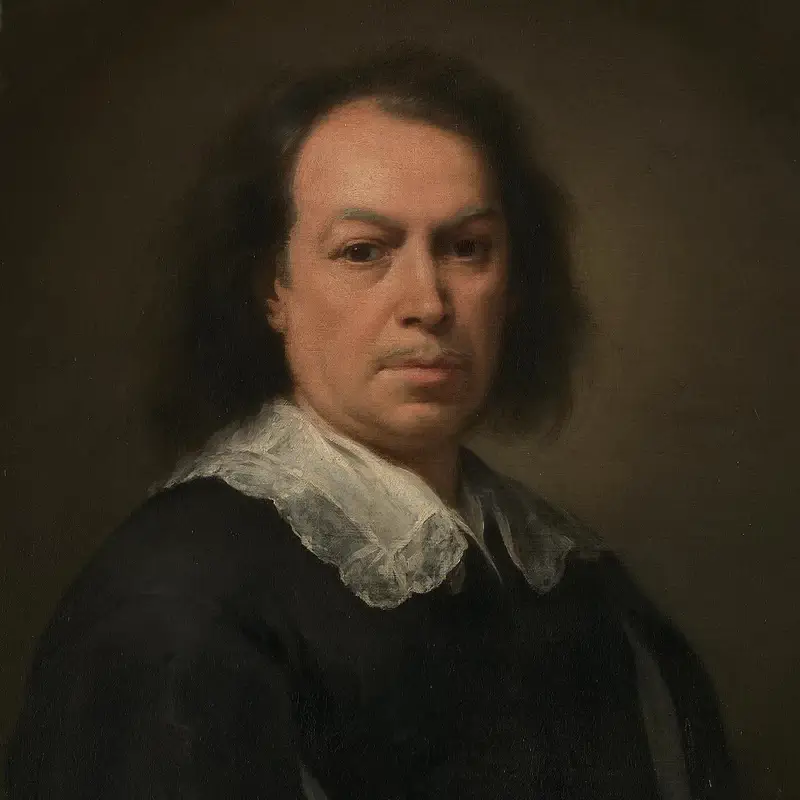
Baptized on January 1, 1618, in Sevilla, Spain, Bartolomé Esteban Murillo quickly became a leading figure in Seville’s art community. His early influences included Diego Velázquez and Francisco de Zurbarán, fellow prominent artists of the Baroque era in Spain. Murillo’s work primarily revolved around religious themes, but he also excelled in depicting everyday life with a touch of his distinct style.
The Fusion of Realism and Idealism
Murillo’s first notable works were created for the Convent of San Francisco in Seville, showcasing his mastery in blending realism with an idealized, sometimes sentimental manner. His paintings, such as “The Vision of Saint Anthony of Padua,” often exhibit a keen sense of naturalism, combined with a spiritual and emotional depth. This style resonated deeply with the religious orders and confraternities, who were among his chief patrons.
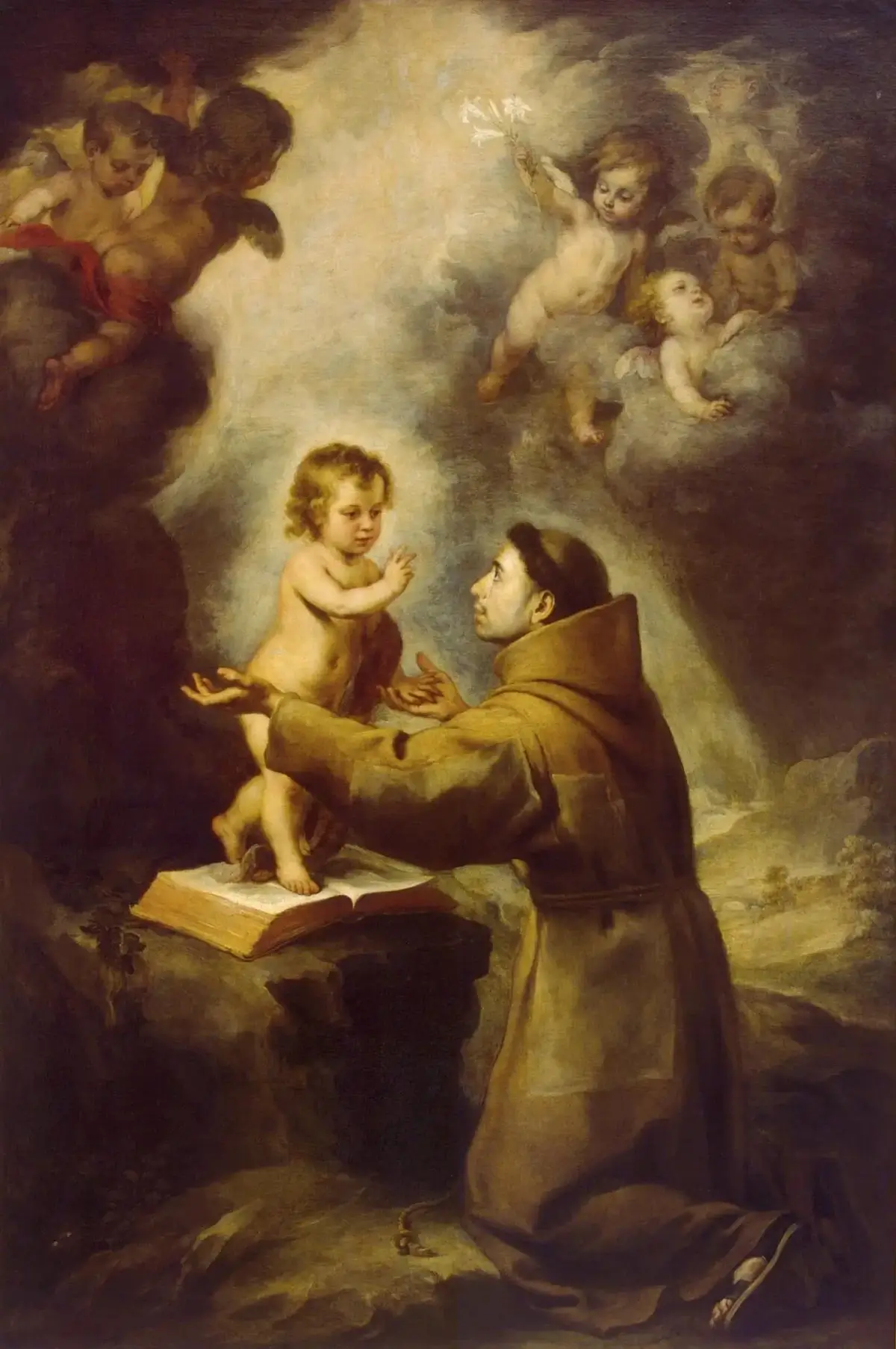
Esteban Murillo, “The Vision of Saint Anthony of Padua”, 1680. Image: arthive.com
Genre Paintings and Legacy
Apart from religious works, Murillo also painted vivid portrayals of contemporary women and children, providing a rich glimpse into the life of 17th-century Spain. His genre paintings, like “Two Women at a Window,” were celebrated for their lifelike quality and emotional resonance. These works, featuring flower girls, street urchins, and beggars, formed an extensive and appealing record of everyday life of his times.
Murillo’s ability to depict the sacred in a relatable, humane manner made him one of the most admired and popular European artists into the 18th and early 19th centuries. His style evolved over the years, becoming increasingly free in handling, especially in his representations of the Immaculate Conception. His influence extended well beyond his lifetime, marking him as one of the key figures of the Baroque movement in Spain.
12. Zurbarán: Spiritual Depth in Still Life
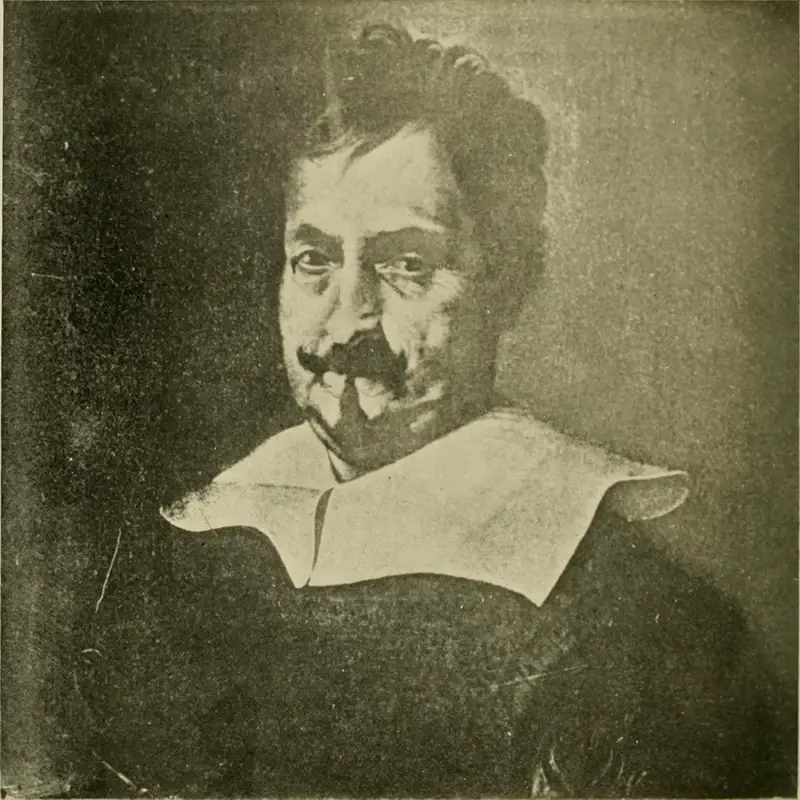
Francisco de Zurbarán, baptized on November 7, 1598, in Fuente de Cantos, Spain, is renowned for his significant contributions to the Spanish Baroque movement, particularly in religious art and still life. His style is characterized by a dramatic use of light and shadow, known as tenebrism, lending a profound spiritual depth to his subjects.
Early Life and Rise to Prominence
Zurbarán began his artistic journey in Seville, where he apprenticed under Pedro Díaz de Villanueva. His early works, like the series for the Dominican monastery San Pablo el Real in Seville, established him as a prominent religious painter. His reputation was further solidified with commissions from the Mercedarians of Seville and his appointment as a painter to Philip IV.
Mastery of Tenebrism and Realism
Zurbarán’s work is noted for its Caravaggesque naturalism and the masterful use of tenebrism. He painted his figures directly from nature, making significant use of chiaroscuro to highlight the spiritual and emotional intensity of his subjects. His skill in depicting the texture and folds of draperies, particularly in white, added a remarkable realism to his paintings.
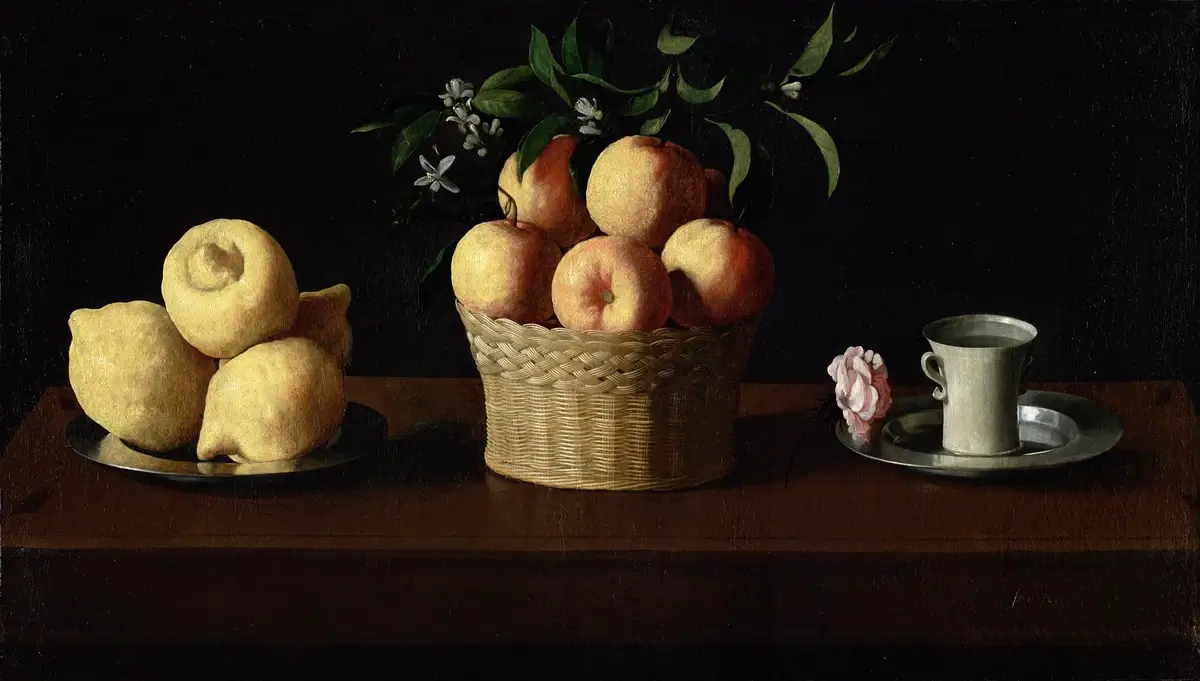
Francisco de Zurbarán, “Still Life with Lemons, Oranges and a Rose”, 1633. Image: Wikimedia Commons
Influence and Artistic Legacy
Despite facing competition from contemporaries like Murillo, Zurbarán’s work remained influential, particularly in his depiction of religious austerity and simplicity. His paintings often featured monks, nuns, and martyrs, portrayed with a solemnity that reflected the spiritual life. In his still life works, Zurbarán brought the same level of detail and realism, making them some of the most revered in the genre.
Zurbarán’s legacy lies in his ability to infuse everyday objects and religious figures with a profound spiritual significance, making him a unique and enduring figure in the world of Baroque art.
13. Juan de Juanes: The Renaissance in Spain
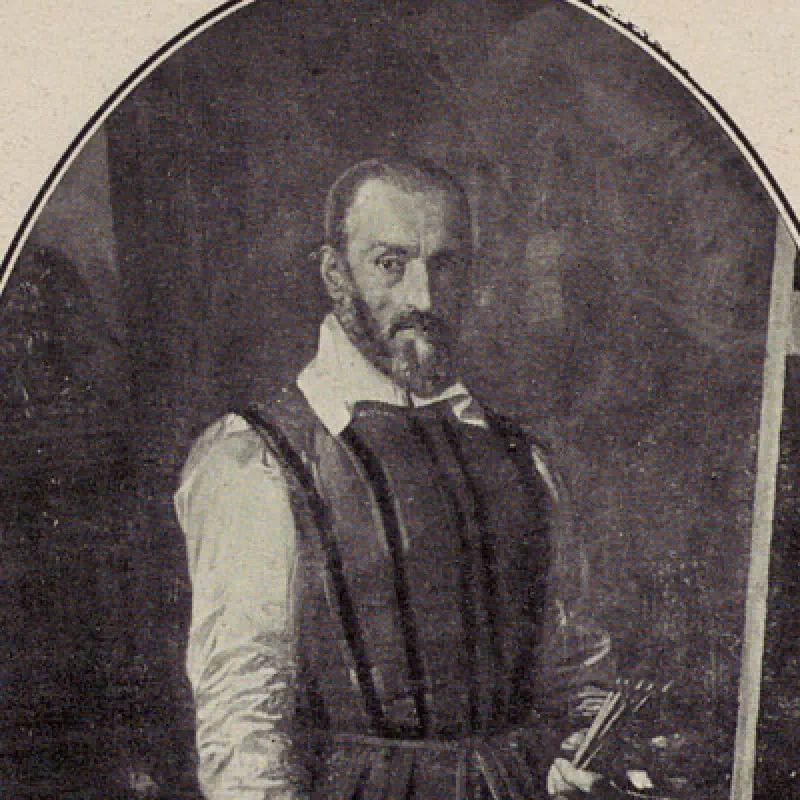
Juan de Juanes, born Vicente Juan Masip in La Font de la Figuera around 1507, is a revered figure in Spanish Renaissance art. He was the most prominent member of the Valencian school of painters, inheriting a legacy from his father, Vicente Masip, who was also a significant painter.
Merging Italian Influence with Spanish Tradition
Juanes’ artistry is noted for its Italian influence, particularly from painters like Sebastiano del Piombo. However, it’s debated whether Juanes actually traveled to Italy or absorbed these influences through the Italian paintings that arrived in Valencia. He was well-versed in the works of Raphael and employed a style that combined Italian finesse with Spanish religious fervor.
A Life Dedicated to Sacred Art
Throughout his career, Juanes predominantly painted religious subjects, characterized by precise drawing, rich color, and attention to detail. His works, such as the renowned “The Last Supper,” showcased his expertise in creating evocative landscapes and classical architecture in his compositions. His paintings often reflected a deep understanding of religious narratives and classical eloquence.

Juan de Juanes, “The Last Supper”, 1562. Image: Wikimedia Commons
A Legacy in Religious Art
Juanes’ commitment to his faith was profound; he painted only after receiving holy communion, treating his art as a solemn and spiritual endeavor. He enjoyed substantial patronage from the Church, painting for various religious orders and cathedrals in Valencia. Among his notable works is the “Immaculate Conception” for the Jesuit church, reflecting his profound religious convictions.
Juan de Juanes remains a central figure in the history of Spanish Renaissance art, his works continuing to inspire admiration for their blend of religious devotion, classical elegance, and expressive realism.
14. José de Ribera: The Tenebrist Touch
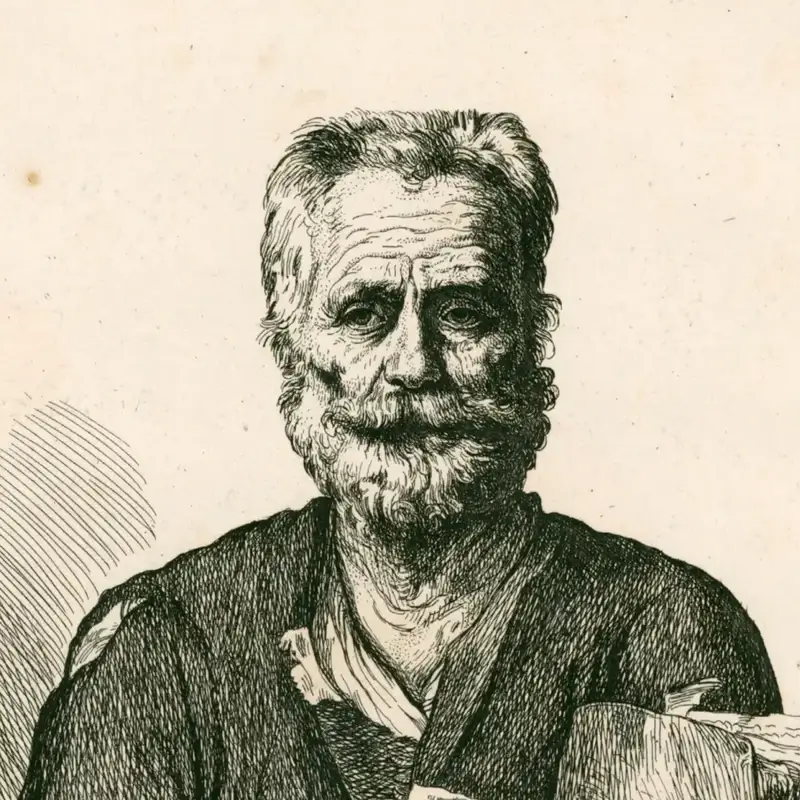
José de Ribera, baptized on February 17, 1591, in Játiva, Spain, is renowned for his mastery in Tenebrism, a style characterized by stark contrasts between light and dark. His journey as an artist began in Spain, but it was in Italy, particularly Naples, where he established his reputation and spent most of his career.
Spanish Influence in Italian Art
Ribera’s Spanish heritage played a significant role in his career, aligning him with the Spanish ruling class in Naples. He often signed his works as “Jusepe de Ribera, español,” emphasizing his Spanish identity. This connection helped him secure commissions from prominent patrons like the Duke of Osuna, Spain’s viceroy in Naples. Ribera’s early works showed the influence of artists like Guido Reni, but he soon developed a distinct style marked by dramatic realism.
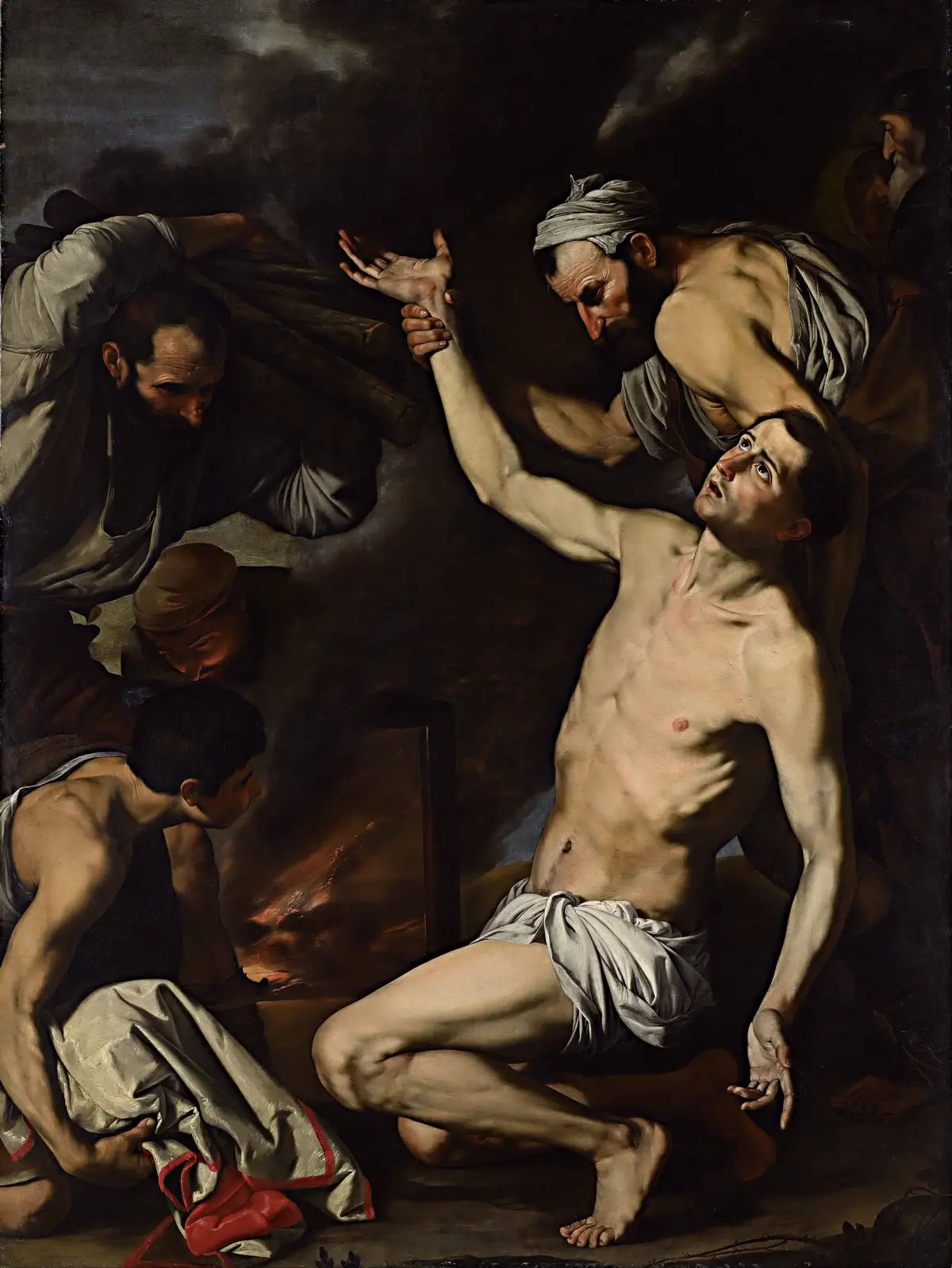
José de Ribera, “Martyrdom of Saint Lawrence”, between 1620 and 1624. Image: Wikimedia Commons
The Height of Ribera’s Career
Ribera’s mastery in Tenebrism is evident in his religious and mythological subjects, where he portrayed raw realism with intense emotional depth. His works often depicted scenes of martyrdom and saints in agony, characterized by a profound sense of humanity. His later years saw a decline in health and financial difficulties, but he continued to produce acclaimed paintings until his last year.
Legacy and Influence
Ribera’s impact on Baroque art was significant, with his style influencing not only artists in Naples but also those in Spain. His approach to naturalism and use of chiaroscuro had a lasting influence on the Baroque movement. Ribera’s diverse artistic skills, including his talents as a draftsman and engraver, further underscored his prominence in the artistic landscape of the 17th century.
José de Ribera’s work remains a testament to the Tenebrist style’s power and his unique ability to capture the human condition’s intensity and depth.
15. Miquel Barceló: Contemporary Art’s Innovator
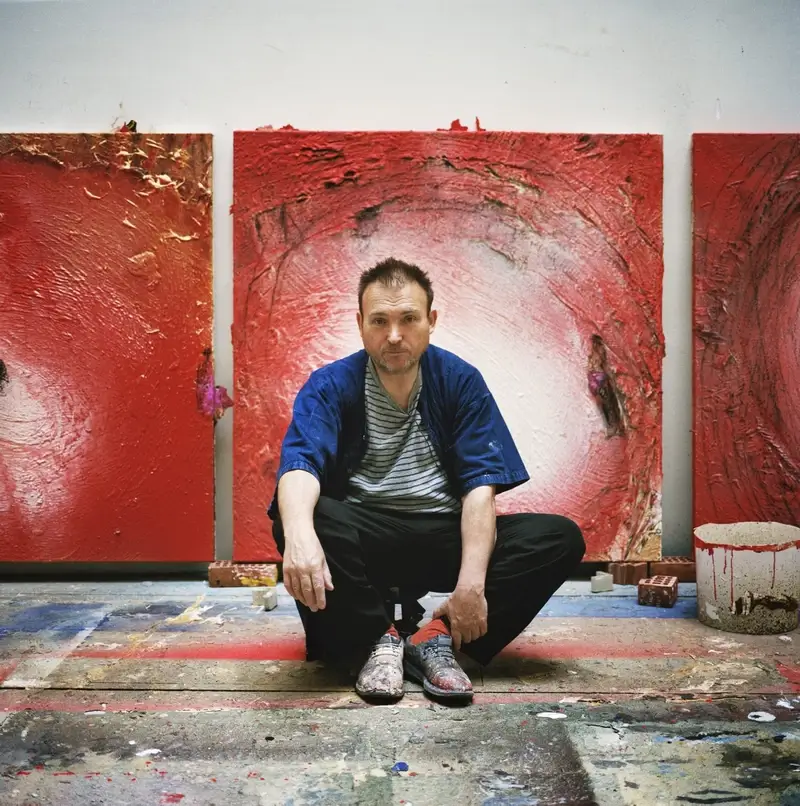
Miquel Barceló, a renowned Spanish contemporary artist, is celebrated for his dynamic evolution in technique and material. His diverse body of work encompasses paintings, drawings, sculptures, ceramics, and cast iron pieces. Barceló’s art is a fusion of influences, including the avant-garde, Art Brut, and American Abstract Expressionism. He is particularly known for his interest in natural textures and forms.
International Recognition and Artistic Journey
Gaining international acclaim at the “Documenta 7” in Kassel, Germany, in 1982, Barceló’s career took a significant leap. In 1983, his move to Naples led to a series of works utilizing volcanic cinder, displaying his adaptability and innovative approach to materials. His participation in the Terrae Motus collection following the 1980s earthquake in Naples is particularly notable for its reflective and introspective nature.
Awards and Notable Projects
Barceló’s artistic achievements have been recognized with several awards, including Spain’s National Award for Plastic Arts in 1986. His collaboration with the arts has extended to architectural projects, such as the dome of the Mercat de las Flors Theatre in Barcelona and the Chapel of Sant Pere in Palma de Mallorca’s Cathedral.
One of his most impactful works is the dome of the Human Rights and Alliance of Civilizations Chamber at the UN’s European headquarters in Geneva. This massive dome features a 1,400 m² area adorned with thirty-five tons of paint in the form of colored stalactites.
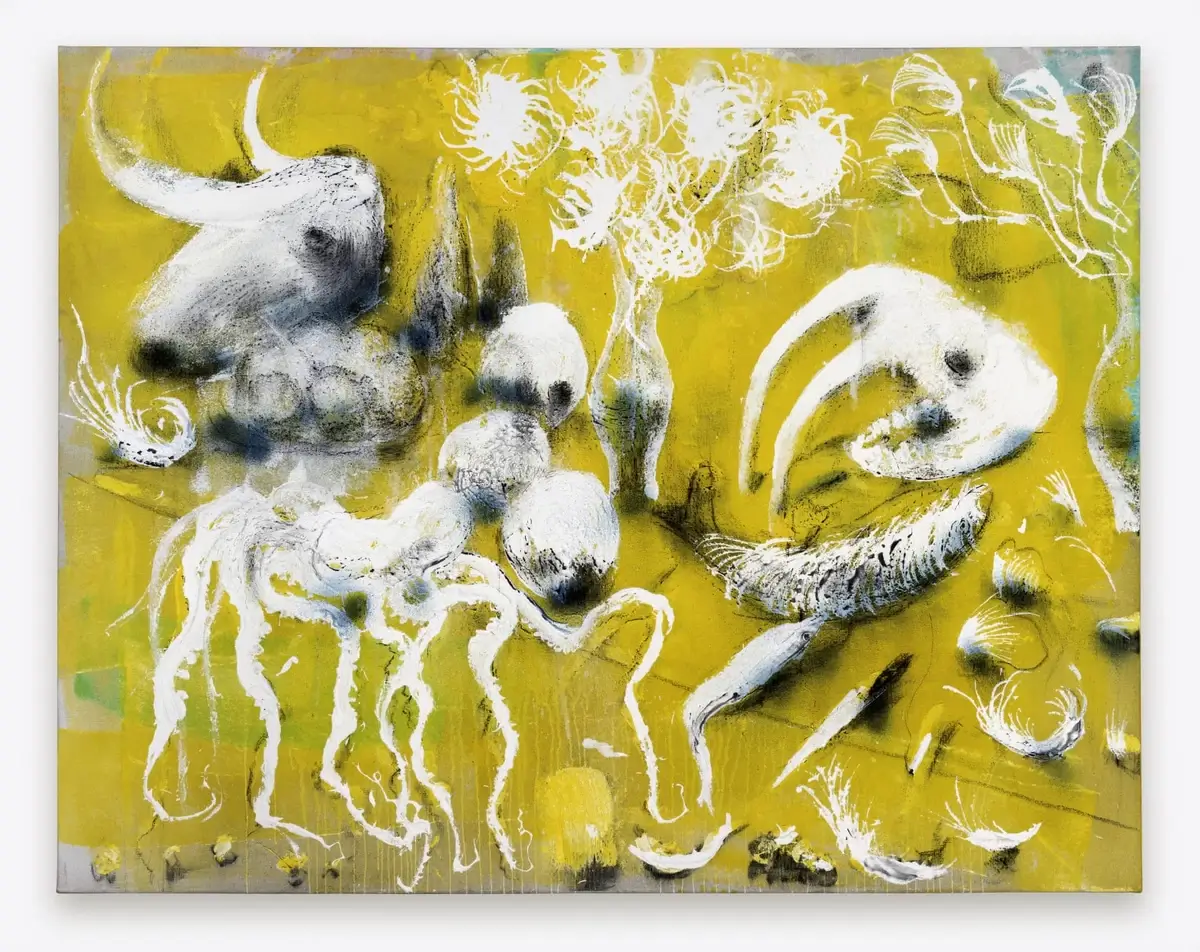
Miquel Barceló, “Bodegón groc”, 2021. Image: ropac.net
Barceló’s Global Presence
Barceló’s work is represented internationally by notable galleries in Zürich and New York City. His journey as an artist is marked by constant exploration and experimentation across various mediums. From illustrating Dante’s “Divine Comedy” to designing sets for opera, Barceló’s versatility and passion are evident in his extensive and varied body of work.
Miquel Barceló continues to be a significant figure in contemporary art, renowned for his exploratory nature and unique artistic language that speaks to a global audience.
FAQ
Who is the most famous Spanish artist?
Pablo Picasso is often regarded as the most famous Spanish artist. A prolific painter, sculptor, and one of the most influential artists of the 20th century, Picasso is best known for co-founding the Cubist movement and for a variety of styles that he helped develop and explore throughout his long career. His notable works include “Guernica” and “Les Demoiselles d’Avignon.”
Which Spanish painter is known for bright colors?
Joan Miró is renowned for his use of bright colors. A Spanish painter, sculptor, and ceramicist born in Barcelona, Miró’s works are noted for their vibrant color palette and abstract forms, contributing significantly to the modern art movement. His style was a blend of abstract art and Surrealist fantasy, creating playful, lively compositions.
How did Goya’s art reflect the society of his time?
Francisco Goya, a master of the Romantic period, is known for his art that vividly reflected the society and political upheaval of his time. His works, especially “The Third of May 1808” and the “Disasters of War” series, depict the horrors of war and criticize the societal and political conditions of Spain, offering a stark and moving portrayal of human suffering and the darker aspects of human nature.
What is unique about Salvador Dalí’s contribution to art?
Salvador Dalí was a prominent Surrealist artist known for his striking and bizarre images. His contribution to art is unique in the way he visualized and rendered dreamlike, surreal landscapes with meticulous precision and imaginative symbolism. Works like “The Persistence of Memory,” known for its melting clocks, showcase his distinctive style combining vivid realism with dream-like surrealism.
How did El Greco influence the art world?
El Greco, born Doménikos Theotokópoulos in Crete, was a painter, sculptor, and architect of the Spanish Renaissance. His unique style, characterized by elongated figures and a dramatic use of color and light, was a significant precursor to both Expressionism and Cubism. He influenced a wide range of modern artists with his idiosyncratic approach to form and composition, and his works, such as “View of Toledo” and “The Burial of the Count of Orgaz,” are celebrated for their emotional intensity and spiritual depth.


